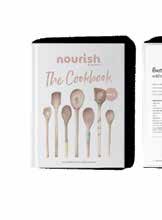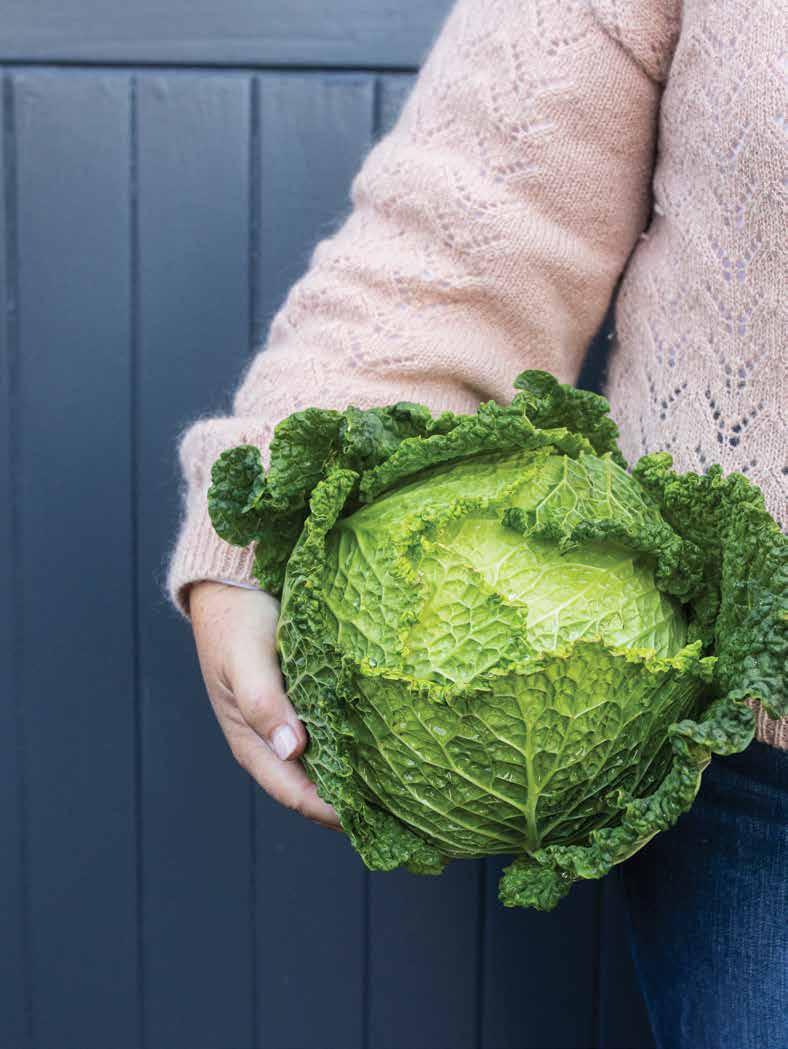




“
“They brought me up to the top floor, and I looked out the window and I thought, ‘That’s me’ - It was just like that.
“Rocks and water are my thing,” says Lois Baucke, the keen gardener explaining her signature look. Lois is a two-time winner of Waiheke Island’s ‘Garden of the Year’, a former trustee of the renown Whangarei Quarry Gardens, and was, until recently, the owner of a quarter-acre paradise in Northland. Now, Lois has set her sights on a new project - the 17m² balcony in her brand-new apartment at Awatere Village.
“They’ve allowed me to bring my water features with me, I’ve donated one to Awatere and I’ve got another one to be assembled on my balcony,” she describes with passion. “There’s a lot you can do with a balcony. I’ve seen articles and magazines of what to do if you need colour to get it just right. I’m quite excited about that, it’s like having an external continuation of my apartment.”
Lois is returning to Hamilton after 22 years in Whangarei, closer to her family who “spoil me!” she proclaims. She began to consider village living after losing her partner Alan in 2023. “I said I’d give it two years. I got to 18 months and thought, ‘What am I waiting two years for?’”
She admits that for a while Awatere wasn’t the initial frontrunner for her choice of village. “My first impressions were that it was a five-star hotel,” she chuckles. “It was very homely, but I just felt that I could think I was here for a stay and not permanently.”
However, when she saw beneath the surface, Lois was won over by the people, who she found to be down to earth. “When I came back the second time, talking with everyone here, the staff and people were so welcoming. Since I’ve been here a month, I’ve found they are very friendly.”
Having lived on lifestyle blocks, including a B & B on several acres, Lois had feared that apartment living may not suit her. “I came from a fourbedroom house on a quarter-acre section with a lot of common land around me. I didn’t want to feel as if I was hemmed in.”
The former Real Estate agent describes how she fell for her new home in an instant. “They brought me up to the top floor, and I looked out the window and I thought, ‘That’s me’ - It was just like that. Because I’ve got big windows, it’s stopped me from feeling claustrophobic. I can see cars going across on River Road and canoes going up and down the Waikato River on the weekends. I’ve got a lot to look at.”
Her river view was not the only outlook Lois considered. It was also important to find neighbours with a positive attitude. A regular gym user and Pilates enthusiast, long-serving Rotarian, member of the You, Me and Friends travel group, and theatre volunteer, she is a firm believer that your view of life is important to maintaining your health. “I think part of the reason I chose Awatere is because it fits with my belief that you are as well and as able as you believe you are. I find here that the people I have met are active and outgoing. They give you an uplift.”
She’s already considering options for joining new clubs and volunteering. “You get a good feeling when you can do something for other people. It gives you more confidence in yourself and better wellbeing. I would like to put back into Hamilton because it’s something I believe in.”
Although Lois has plenty of plans to enjoy her new lifestyle to the fullest, she accounted for her future in her decision-making. “I know that one day I may become unwell and cannot live in this apartment,” she says matter-of-factly. “So, I looked at the care centre. I think it’s a wise thing to do when you’re looking for a village.
“The care centre is amazing… the lounge with the big shist fireplace, which looks out into green and trees. It’s very well set up. It doesn’t look like a care centre at all!” She exclaims. “I think it’s important for your own security. Not physically, but in your mind, to know that next step, where you’re going and what it looks like.”
Just four weeks in, Lois is making the most of having her nieces and nephews close by. “I’m going to plan a get-together next month, a midwinter Christmas here at Awatere. There’s a big lounge and an outdoor area that’s set up beautifully to have a family gettogether.”
It’s all a-buzz at Lois’s. Her settee was delivered last week, one of her nephews was over this morning with big plans for installing her treasured water features, and tonight she’s going to a resident’s dinner.
At Awatere, Lois is putting down roots and flourishing.
Awatere Retirement Village, 1350 Victoria Street, Beerescourt, Hamilton
0800 333 688
oceaniahealthcare.co.nz

With over 60 years of experience, Treetown Designer Kitchens is a trusted expert in creating custom kitchen and interior joinery solutions for homes and commercial spaces in Cambridge, Hamilton, and the greater Waikato region.
W: www.treetownkitchens.co.nz
P: 07 827 7309 E: info@treetownkitchens.co.nz
Image thanks to Jason Tregurtha
Hamilton’s go-to urban precinct – Featuring a market of artisan offerings, alongside a vibrant quarter filled with boutique retail, eateries, restaurants, and bars.
Find something for everyone.




EDITOR Vicki Ravlich-Horan
HEAD DESIGNER Sara Cameron, Minted Design Co.
PROOF READER Nikki Crutchley (Crucial Corrections)
CONTRIBUTORS Denise Irvine, Emma Galloway, Amber Bremner, Liz French, Lynda Hallinan, Kathy Paterson, Julie Le Clerc, Rachel Hart, Fiona Hugues, Vicki Ravlich-Horan, Megan Lyon
COVER IMAGE Ashlee DeCaires
PHOTOGRAPHERS Brydie Thompson, Ashlee DeCaires, Emma Galloway, Amber Bremner, Kathy Paterson, Fiona Hugues, Vicki Ravlich-Horan, Julie Le Clerc. ISSN 2324-4356 (Print) | ISSN 2324-4364 (Online)


It’s usually at this time of year we replace the “happy new year” greeting with “Oh my god, can you believe we are already halfway through the year!” While not a fan of the cold weather, surprisingly, winter is not my least favourite season. I bestow that on spring, the season full of hope that is often dashed with a hailstorm.
Unlike spring, the cold weather in winter is expected, possibly yearned for, as we begin to crave hearty stews and warming soups. If this is you, you’ll love Julie Le Clerc’s recipes on page 50 and Fiona Hugues’ on page 54.
Winter is also the time to break out the woolly jumpers, which you will see I did for the cover of this edition. I never thought I would one day be a cover girl! But it turns out you all loved this image when we put it out on social.
I’m often asked about our covers, and the truth is we usually shoot them at least a year ahead, when the produce is in season and at its best. This will also give you an insight into the planning we do, which 95% of the time works well. The other 5% of the time is when I forget that we have already shot that season and end up doing another. In this instance we are conveniently two years ahead. Or in the case of this season, I couldn’t find where I had filed the images, and we had to reshoot new ones! Luckily I work with some super talented and long-suffering folk.
So with cabbages our hero this season, I cooked up some of my favourite ways to enjoy them. Find these on page 28. I also get all saucy on page 18 with some self-saucing puds.
And while I got saucy for this edition, the rest of the team got spicy. Amber Bremner has some fun with turmeric on page 38, Kathy

Paterson plays with saffron on page 44 and on page 36 we delve into all things spice before discovering on page 48 what’s hot in Hamilton Central.
It may be winter, but that’s no excuse to hibernate! Get out there and enjoy the season, be it on the side of a football field or mountain, entertaining friends at home or braving the elements for a great night out – enjoy everything the season has to offer.

Vicki Ravlich-Horan Editor

P.s. We recently partnered with Hospice on a new initiative (Lucky Last Chance Lottery) for the Bucket List Banquet held in May. I was blown away by the generous support from so many local businesses that made this a huge success. So thanks to Café +91, Foundation Bar & Restaurant, Arkanda, Mousey Brown, Midas, The Shack, Fed Foods, Peplers, Tomtit Farm, Alpino, Coffee Lala, Punnet, Sweet Pea Parties, Keg Room, Sky City, Little Lato, Amber Bremner, Dot and Winnies, The Grumpy Baker, Camarosa, Café Fresca, Smith & McKenzie, Kiki Seed Crackers, Texas Pete’s, Jane Harris, Alpha Street Kitchen, Sentinel, Allen & Unwin, Sage, Gothenburg, Rocket Coffee, Ness Boutique, Scotts Epicurean, Palate, The Chilli House, Cream Eatery, Red Kitchen, Bamboo Sweets, Meyer Cheese, La Cave, Vetro, Thyme Square, Banh Mi, Caci Clinic, Red Kitchen Café, Lifted Pilates, Hayes Common.


2.

The Antiquax range from Read Bros is made from a superior blend of waxes including beeswax and carnauba. It has been specially formulated to resist finger marking and to penetrate and nourish all wood surfaces.
Use Antiquax regularly to maintain a deep lustre on your furniture and to prevent the natural wood grain from drying out in centrally heated rooms.
Founded in London in the early 1900s, Antiquax restoration products are used throughout the world on treasured wooden pieces as well as brass, copper, marble and glass. Priced from $23.95 at readbros.co.nz
4.
In collaboration with Good George Distilling Co, Hospice Waikato have developed a gin that reflects Hospice’s tagline of ‘Living Every Moment’.
This citrus gin is a vibrant blend of lime and orange in every sip, while each bottle is a tribute to the joy of life, inviting you to embrace the present and cherish the memories made along the way. Every bottle bought helps Hospice Waikato continue their vital work –supporting people and families in your community when it matters most.
Grab yours at www.goodgeorge.kiwi.nz.
1.
If you need an excuse to go to Whangamatā over the winter months, a visit to Coromandel Chocolate’s new bean-to-bar chocolate factory and store could just be it!
Or if you aren’t up for a road trip you can get their amazing chocolate, bringing out the best of Pacific sourced cacao, online at coromandelchocolate.co.nz.

3.
RETREAT - SUNDAY 3RDTUESDAY 5TH AUGUST
Step away from the demands of everyday life and dedicate some time to your wellbeing with the Women's Wellbeing Retreat at The Falls Retreat.
Learn to practise wellbeing in your everyday life with workshops on eating well and gut health, mindfulness and relaxation while you enjoy the beautiful setting giving you the opportunity to reconnect with nature, slow down and truly recharge.
Find out more at fallsretreat.co.nz


5.
The stars are shining this Matariki weekend at Palate restaurant as some New Zealand culinary stars come together for an amazing dinner. Joining Mat McLean at Palate is Jeremy Rameka from Pacifica in Napier and Jude Messenger from The Bistro in Taupō. Details on the stellar line-up and to book tickets, go to palaterestaurant.co.nz.

FEED YOUR CULINARY CURIOSITY AT THE WAIKATO FOOD SHOW – 5 & 6 JULY!
The Waikato Food Show returns this July, dishing up a flavour-filled weekend of tastings, cooking inspiration and live demonstrations. A must-visit highlight? The Volare Masterclass Hub. Roll up your sleeves for immersive, handson sessions where you create delectable desserts, dumplings and more, plus indulge in perfectly paired wine and cheese – guided by some of the region’s most talented culinary experts. Or at the Heathcotes Cooking Theatre, a stellar line-up of local chefs (including a few of the Nourish team) will take the stage to share their favourite recipes and kitchen secrets. Tickets on sale now at waikatofoodshow.co.nz
8.
Whether you are celebrating Bastille Day this July or simply looking for a delicious, authentic French yet super simple meal, Duck Confit from La Cave or their Duck Cassoulet (with Confit Duck & Toulouse Sausages with beans) are trés magnifique!
Check them out online at lacave.co.nz and at their Riverlea Road shop.
Just in time for winter, Raglan Food Co have launched their new Tribiotic range. Each serve provides the benefits of prebiotic fibre, probiotic culture and postbiotic Immuse®, delivering a healthy dose of gut and immunity boost*.
Dairy free and with no refined sugar, they are available in two flavours
- Vanilla Bean and Super Berries, in 675g jars and 150g and arriving into stores all over the country. Availability may depend on your local store or region.
* As part of a varied and healthy diet
- Excellent source of dietary fibre to support digestive regularity.
- Immuse® Lactococcus lactis strain Plasma at a daily intake of 50mg supports healthy immune system function 7.






Around 252,000 tonnes of plastic heads to our landfills every year. We spoke to Bridie McNamara from Bare to find out what we can do to bring this number down.
Kiwis drink around 400 million litres of milk a year, that’s just over 1.5 litres a week per person. This equates to at least 200 million plastic bottles. And while they can be recycled, over 40% aren’t, meaning they end up in our landfill or oceans. Plastic left in landfill will take over 400 years to break down, and then, it never fully degrades – only disintegrates into smaller and smaller pieces.
Plastic that ends up in our oceans, an estimated 8 million metric tonnes of it every year, is eaten by wildlife, causing strife with their health and even ending up in our food chain.
Scientists predict that unless we change now, by 2050, there will be more plastic in the ocean than fish.
Plastic packaging is a huge problem. According to Plastics NZ, every New Zealander consumes approximately 31kg of plastic packaging every single year and only recycles 5.58kgs. Although recycling efforts around the country have been increased and we have seen a ban on single use plastic bags, cutlery and straws, the amount of packaging ending up in landfills is not reducing, rather increasing.
What’s the solution? Bridie McNamara says it’s simple – reduce our reliance on plastic packaging. Bridie owns Bare at Made in Hamilton East and is proving you can refuse plastic packaging and still enjoy quality products.
Let’s go back to the milk. Bare offers locally produced Kaipaki Dairies milk in reusable glass bottles and by doing so have eliminated over 4,000 plastic bottles entering the supply chain.

Add to this nearly 4,000 plastic cream and yoghurt containers saved from the purchase of Dreamview yoghurt and cream.
If the average family of four switched to reusable glass bottles they would save over 150 2-litre plastic milk bottles a year!
Bridie says there are even more ways you can easily reduce your family’s plastic packaging, including soft plastics, which are not part of local kerbside recycling schemes.
Bare saved nearly 500 plastic bags a year from selling frozen berries alone. Add to that over 2,000 plastic bags from lollies.
Bridie says, “People don’t realise that plastic packaging is everywhere and that in most cases there is an alternative.” For instance, in the last year Bare have avoided over 500 plastic toothpaste tubes from being used and nearly 400 deodorants.
The list of plastic free products Bare offers is long, from shampoo to dishwashing liquid and sunscreen, pet food to chocolate, cereal to cashews, rice, pasta, bone broth, vinegar, freshly squeezed juice, spices … you get the idea.
“It takes a little more effort and organisation,” admits Bridie, “but every little act counts.” Bare offer a jar library where you can pick up a donated jar if you forget yours, or you can donate your old jars for others to use. They also offer a paper bag alternative.
“It’s about changing habits,” says Bridie, “even if it’s just one product at a time.”
Bare
Made Market, 401 Grey Street, Hamilton East www.barerefillgrocery.co.nz


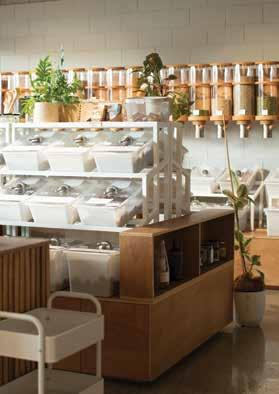

252,000 tonnes
An estimated of plastic ends up in landfill every year.
Stop contribution to the problem by refilling.
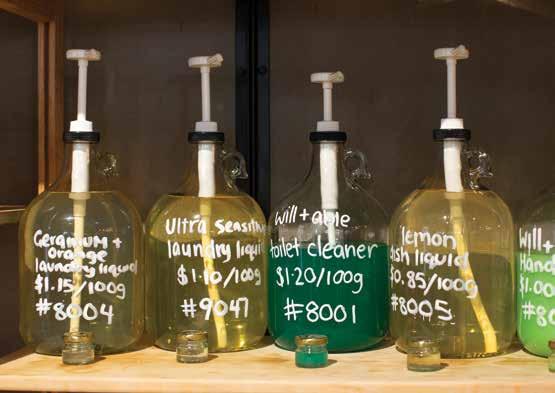
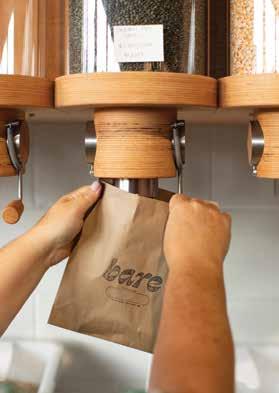
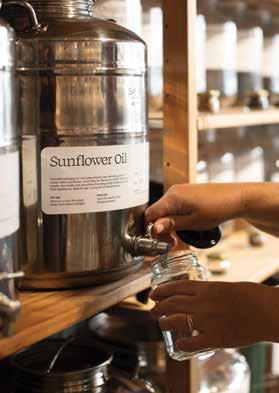

I have a fondness for quinces and vermouth but have always enjoyed them independently of each other, as in quince paste and a glass of vermouth with loads of ice.
This Monday afternoon, the two things unexpectedly come together in a cocktail at Neat, the speciality liquor store and tasting room at Made Market in Hamilton East. The cocktail is from an ever-changing list compiled by Alex Hudson, Neat founder and drinks supremo, and I’ve been attracted by a key ingredient, the previously unknown Saison Fallen Quince Vermouth that happily combines two favourites.
For this cocktail, the Fallen Quince is blended with Roots Rosso Vintage Pinot Noir Gin, Dicey pinot noir wine and fruity cassis liqueur. Alex steps through each component as he measures and shakes, and he says the best drinks are served with a story, an insight into the craft. “It’s the little things, the subtle things that create the experience.”
So he shares some background on the luscious quince-y vermouth from Melbourne, the Roots gin from Blenheim, and how the cocktail achieves balance without the traditional acidic hit of citrus. He also explains a few technical skills and the importance of perfectly made ice cubes, followed, of course, by the pleasure of drinking a bright and juicy cocktail which is the colour of amber beads.
You expect the unexpected at Neat, a rare gem that blends hospitality with retail, where you can enjoy a drink in-store, buy a bottle for home, or take part in a structured tasting or a masterclass.
Neat opened in May last year under the Hamilton hospitality partnership of Alex, Mat Pedley and John Moughan, whose establishments include Mr Pickles, Last Place, Wonder Horse, Everyday Eatery at Hamilton Zoo, Reggie’s, on the rooftop at Made, and Neat on the market’s ground floor.
Alex says he’s had a number of ideas for a set-up such as Neat and has been working towards it for a long time, honing his hospitality skills and gaining knowledge through years of travel, bar-tending competitions and bar management.
He is best known for his work at Wonder Horse on Victoria Street, which he opened in 2012, developing a reputation for handcrafted cocktails, craft beers and top quality wine. Neat, the latest creation, perhaps takes its inspiration from the concept of a chef’s table, with a limited number of people enjoying an experience curated by experts in their field.
“Neat enables us to share our knowledge,” he says. “We’ve assembled a list of spirits, wine and craft beers not typically sold by others, and our customers have the pleasure of watching their drinks being made especially for them.”
It all happens in an elegant tasting room with floor-to-ceiling shelves that look like they’re out of a library but in fact they’re laden with bottles of whiskey, gin, mezcals, liqueurs, wines and more.
The bottles come from all points of the globe, and Alex and his staff can tell you the provenance of every one of them. Alex says some people think the bottles are Neat’s own collection but a huge number of them are retail stock, definitely for sale, and there are between 200 to 300 whiskeys in the line-up.
He doesn’t have a favourite. “I prefer to have a different drink every time. I wouldn’t be good at this job if I had a favourite.”
A massive high table is central to Neat’s story. It creates intimacy, comfortably seats 15 people but can stretch to a few more, and its design and construction was a collaboration between Alex, his business partner John Moughan, and an architect friend from Australia.
Arrangements are flexible: you can settle in and order a cocktail, a craft beer or a glass of wine and maybe a simple bar snack assembled by staff, or bring in take-out food from Made’s adjacent Mess Hall or from Reggie’s upstairs.
Or you can get a bit more serious and book a structured tasting of a favourite spirit or wine variety with friends, or perhaps organise a private cocktail masterclass to tweak your skills and maybe learn how to make a decent margarita or espresso martini at home.
Neat holds its own scheduled (and sought-after) masterclasses at the high table, and it’s where whisky clubs and similar groups meet. It is an informal gathering place for Hamilton East locals, and the tasting room can sometimes be reserved for private functions for up to 30 people.
Alex is also planning future events led by guest wine-makers, distillers and spirits ambassadors. “It’s down to what people want.”
He says he recently had a couple walk in who told him they didn’t typically drink spirits but were interested in doing a bourbon and rum tasting. So he put this together for them on the fly, guiding them through the process with four different rums and four bourbons. He says they enjoyed it immensely and departed with a new appreciation of these.
He likes seeing customers gain pleasure and understanding from a tasting or class. “You don’t have to smell gooseberries on the nose or the sea breeze rustling through the pine trees but through practice and guidance you might find more joy in what you taste.
“We can teach you how to catalogue flavours and create connections between previously remembered flavours with what is happening in real time. This enhances the tasting experience, and you can develop more confidence and knowledge.”
So in the spirit of all this (no pun intended), I buy a bottle of the lovely Fallen Quince Vermouth, and while I may not faithfully replicate Neat’s bespoke amber cocktail at home, it will be a pleasure to experiment with it over time. ___
Book your own Neat tastings with six tasters of the tipple of your choice. The Neat team will talk them through with you and supply tasting notes. Or better still, create your own monthly tasting club. Contact the team for more information.
Inside Made, 401 Grey Street, Hamilton East neatdrinks.co.nz

Denise Irvine
Denise Irvine is a born-and-bred Waikato journalist and foodwriter. Her work frequently showcases the region's talented chefs and food producers; she says we have the best of the best here.

WORDS VICKI RAVLICH-HORAN
What started as a fun trip with an old friend to Sicily has turned into a new business – Taste of Tours.
It’s no secret that I love to travel. Combine it with great food and wine and a big dash of storytelling and it’s the perfect recipe for me and, it turns out, for many of you. I have been blown away by the response we have had for our tours and, most importantly, with the feedback from our guests. The fact that several have returned for a second tour with me is the ultimate compliment.
So what makes Taste of Tours different?
Size – our tours are strictly small group tours with a maximum of 12 guests. When I first started, I used the term small group tours a lot only to discover ‘small group’ on other tours means 18–24 guests!
By keeping our group truly small we can experience so much more, from eating in local restaurants to visiting local cheesemakers, and going inside kitchens for a cooking class. When we visit a winery, it’s not a lecture on the vineyard but an intimate discussion with the winemaker. No headphones with a guide at the front droning on and reciting facts, instead we amble and chat as a group of friends discovering something new around each corner.
A smaller group also means less waiting and more time to see and do!
As an ardent independent traveller who normally spurns organised tour holidays, I have created Taste of Tours with me
in mind. Keeping the group small and made up of like-minded Kiwis is key. Whether you are travelling alone, as a couple or with friends, this small group dynamic creates a family-like feel.
This atmosphere is cemented by the fact almost all your meals on a Taste of Tour are included. There is nothing more bonding than breaking bread and raising a glass together, and we want to ensure those meals are memorable. It’s a foodie tour after all!
From a rustic lunch in a market, to a dinner in a private palazzo, a cave or at the best restaurant in town, an aperitivo with a view to die for or pasta you made yourself – the meals on a Taste of Tour are part of the experience, so naturally included.
Just as we spend time curating the meals, we also spend just as much time designing the itinerary to ensure guests get a real taste of place. We can’t go everywhere – for instance in South Australia you can visit a different winery every day of the year and still not get around them all, so it is our job to decide which. Staying in South Australia we have chosen wineries that naturally make great wines, but we’ve also considered the experience, the story, balancing the old and established with the new and up and coming, the small and family-run wineries with the global giants.
Creating key relationships with locals is another key part of Taste of Tours success. While all our tours have a Kiwi host, we also have local guides and drivers so you are well looked after.
So sit back and enjoy a taste adventure with me.


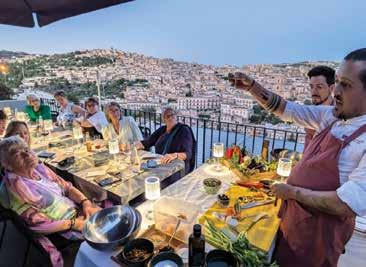
This is our flagship tour and one of my favourites! I love this island so much I am dragging my husband, Andrew, with me this year to convince him this is where we need to ‘retire’.
We still have 3 spaces left in our Taste of Sicily tour this September, so if you are keen to join me, please email me hello@tasteoftours.com
This tour was created in partnership with my friend Rosario, who I met whilst managing a restaurant in Notting Hill. We had no idea back then that 25 years later we would have similar careers, promoting and celebrating the food from our hometowns, the very places we were so eager to leave when we were young.
There is so much to love about Sicily – the layers of history and how this is reflected in the food. Who knew my BA in classical studies and career in hospitality would come together! Like the food, the architecture in Sicily tells a story of the past and will give you a kink in your neck as you wander the streets looking up and marvelling at the beauty.
Another highlight of Sicily is their emerging wine story as they embrace their heritage and traditions to create their own wine identity.

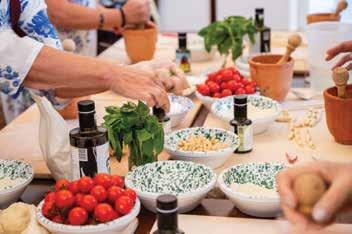

I was first introduced to Puglia when I worked for a wonderful couple in Melbourne. Michael’s broccoli orecchiette was worth volunteering for the lunch shift any day of the week. Add to the fact that my favourite wine varietal, Primitivo, comes from Puglia, it was a no-brainer we would create a tour to this region of Italy, the first being late September/early October 2026 which will run after our Taste of Sicily tour, allowing you to join the two together.
This one’s special for me, as I get to share with you while also learning more myself about the land of my pop. Join Julie Le Clerc and myself on our inaugural tour of the Croatian coast in June 2026.
From the best olive oil and truffles of Istria to the unique wine of Korcula island. We'll wander through the lavender fields of Hvar, marvel at the city walls of Dubrovnik, scoff oysters in Ston and so much more.




This one’s a truly intimate tour as we base ourselves in a gorgeous villa just outside Bologna for five nights. From this wonderful base we will travel to nearby towns to discover the secrets and traditions of world-renowned Italian foods like balsamic vinegar, Parma ham, Parmigiano Reggiano, not to mention lasagne, tortellini and some amazing wines.
This tour is scheduled to end just a few days before our Taste of Croatia tour begins, allowing you to join the two together for one epic culinary holiday.

If you are looking for a destination that has it all, Mexico is it! Layers of history, fascinating culture, wonderful art (think Freda Kahlo) and architecture (from ancient pyramids to the Spanish cathedrals), beautiful beaches and wildlife (we’ll swim with turtles) and I haven’t even got to the food!
Mexico will surprise and delight, and we have created a tour you will love.
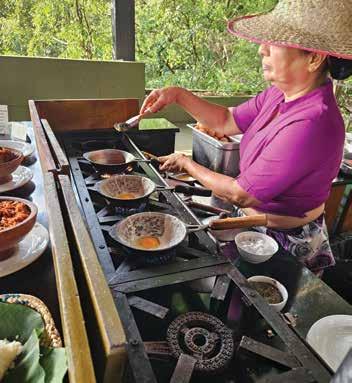

With the 2025 tour sold out, don’t miss your chance to book our 2026 tour hosted by Emma Galloway. For me, Sri Lanka stands out as an amazing destination for three reasons. The people – the most zen people I have ever met! In Sri Lanka you will experience firsthand the teaching of Buddha through the people that live it each day.
The wildlife – from monkeys on your hotel balcony to seeing truly wild animals in their element on safari, Sri Lanka will awe you with its wildlife.
The ingredients – from rice paddies as far as the eye can see, to pepper drying along the side of the road, picking tea in the hills or learning how cinnamon is harvested, Sri Lanka will give you a true appreciation for these ingredients.

As I write this I am not long back from South Australia, and it is hard to call that work! I love this region of Australia. Foodies, forget Melbourne, South Australia has it all – amazing restaurants, wine, beer, cheese, chocolate, gin, markets… and we experience them all.
Join Chef Mat Mclean this October or my good friend and wine expert Julia Clarke over Easter in 2026.
www.tasteoftours.com
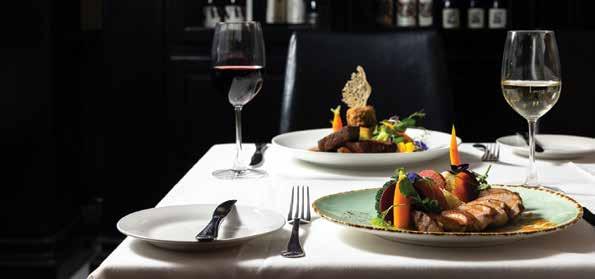

Winter is the perfect time to indulge in a comforting self-saucing pudding.
Chocolate self-saucing pudding is the OG of self-saucing puds.
The addition of poached pears gives a simple dessert a posh makeover and a great option for when you have friends around.
1 cup flour
2½ tsp baking powder
¼ cup caster sugar
¼ cup cocoa powder
pinch of salt
½ cup milk
50 g butter, melted
1 egg
1 tsp vanilla extract
Poached pears
1 cup brown sugar
¼ cup cocoa powder
1½ cups boiling water
Mix flour, baking powder, sugar, cocoa and salt in a bowl.
In a separate bowl or jug, whisk together the milk, butter, egg and vanilla. Pour this into the flour mixture and combine to form a thick batter.
Spread into a greased 1.5 litre baking dish. Press the poached pears on top.
Mix brown sugar and cocoa powder together, and sprinkle over the batter.
Carefully pour the boiling water over the back of a dessert spoon all over the top of the pudding.
Bake at 175°C for 30 minutes, or until the top of the pudding springs back when poked lightly.
Remove from oven, stand for just a few minutes (no more!), then serve with cream or ice cream.
Poach the pears the day before and allow to cool. Don’t throw away the poaching liquid, you can reuse this to poach more.
You can also add aromatics to the poaching liquid, from a cinnamon quill to fresh ginger. I sometimes replace half the water with elderflower cordial. If you do this reduce the sugar by half.
4 pears
1 cup sugar
2 cups water
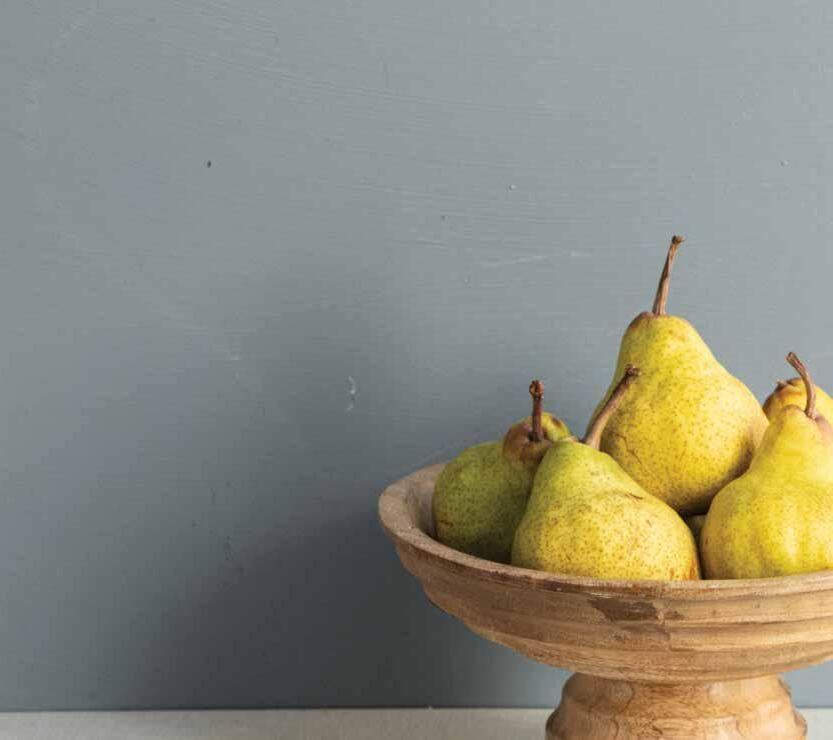
Peel, halve and core the pears. Place the sugar and water in a saucepan and heat until the sugar has dissolved. Add the pears to the syrup, cover with a cartouche, which is a fancy name for a lid made from baking paper. No need to go to too much trouble here, simply tear off a piece of baking paper, scrunch it into a ball then unfold enough to fit inside the pot. This will keep the pears from popping up above the water and keep some of the steam in.
Simmer the pears until tender. This will take between 10–20 minutes depending on your pears and how firm they were to begin with. Allow the pears to cool in the syrup.
Be it your own or the neighbours, lemon trees are heaving at this time of year, so it’s your duty to use them, and what better way than pudding.
75g butter, melted
1 tbsp lemon zest
¹⁄³ cup lemon juice
3 eggs, separated
1 cup milk

1 cup caster sugar
¼ cup self-raising flour
¼ cup coconut
1 cup blackberries
1 tbsp icing sugar
Place the butter, lemon zest, lemon juice, egg yolks and milk in a bowl then whisk to combine. Sift in caster sugar, coconut and flour then stir again, before finally adding the blackberries.
In a clean bowl use a mixer or electric beater to beat egg whites until soft peaks form. Fold half of the egg white into the lemon mixture then gently fold in the rest.
Spoon mixture into a greased 1.5 litre baking dish or 6 ramekins and place in a larger baking dish. Pour enough boiling water into the baking dish to come halfway up the sides of the smaller dishes. Bake at 170°C for 25–30 minutes or until golden and just set. Dust with icing sugar and serve with cream or ice cream.
What’s better than the traditional sticky date pud with caramel sauce? The self-saucing version!
1½ cups dates, pitted and chopped in half
¾ cup boiling water
1 tsp baking soda
125g butter, softened
½ cup brown sugar
2 eggs
1 cup self-raising flour
50g unsalted butter
1½ cups brown sugar
1½ cups water

Place the dates, water and baking soda in a bowl and allow to stand for 5 minutes. Place the butter and sugar in a food processor and process until well combined. Add the eggs and flour and process until just combined, then add in half the soaked dates and all their soaking liquid. Process until just combined. Fold in the remaining dates. Pour the mixture into a 2-litre-capacity baking dish.
Place the remaining butter, sugar and water in a small pot and heat until the butter is melted and the sugar has dissolved. Gently pour this over the pudding mixture.
Bake for 40–45 minutes at 175°C or until firm to touch. Allow to stand for 10 minutes, then serve with a big dollop of ice cream.


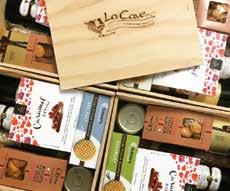
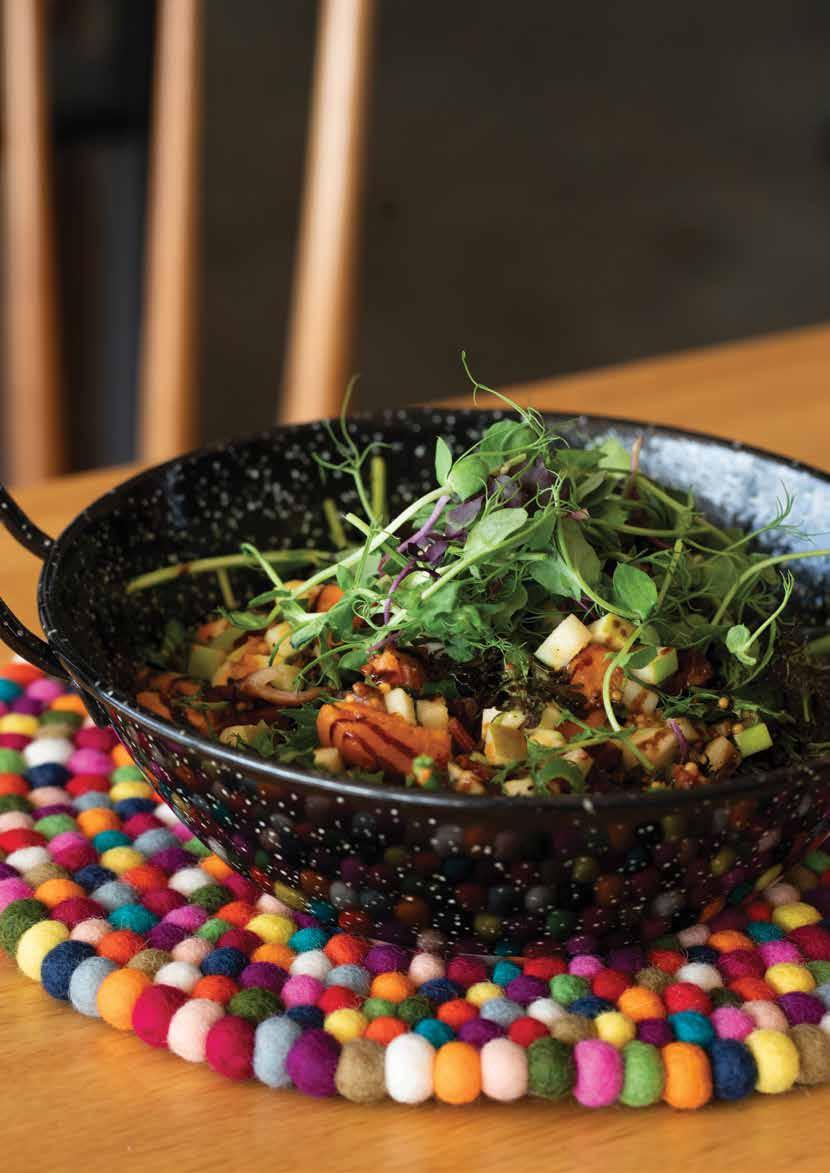
Ryan Burke, chef and co-owner of Red Kitchen Cafe in Te Awamutu, says that salads can be just as good in the winter as the summer months. The key is using heartier vegetables like kūmara, and greens like mizuna. This also means you can use bolder flavours.
In this one, a regular in the cabinet at Red Kitchen, Ryan has used beautiful locally grown organic mizuna from The Micro Farm, whose array of leaves, micros and greens are available to buy at Red Kitchen Cafe.
Also available in store is Ryan and Alex’s own honey, produced by their two beehives on their Te Kowhai lifestyle block. This beautiful mixed floral, raw runny honey is now also available at Red Kitchen Cafe and well worth grabbing a jar while you can.
1 medium kūmara, peeled and cubed
2 tbsp olive oil (Ryan used Bracu Estate Olive oil produced just up the road in Bombay)
5 rashers streaky bacon (from Expleo next door)
1 tbsp apple cider vinegar
1 tsp wholegrain mustard
1 tsp honey (Ryan and Alex’s honey, available in store)
salt and pepper to taste
1 small red apple, diced
50g pecans or walnuts, chopped and toasted
200g mizuna (The Micro Farm)
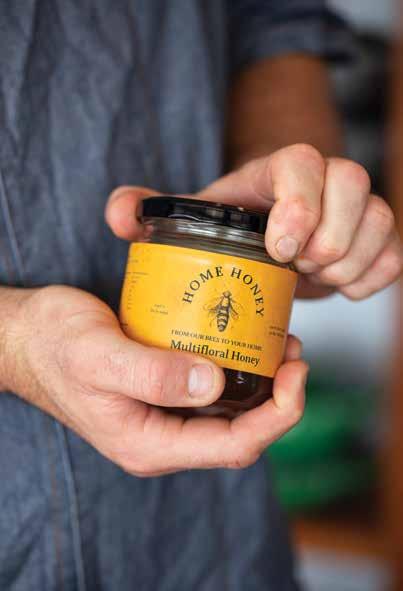
Toss kūmara cubes with 1 tbsp olive oil, salt and pepper on a baking tray and roast at 200°C for 25–30 minutes.
Cut the bacon into 1 cm pieces and cook until crispy, about 5–7 minutes. Drain on a paper towel.
Make the dressing by whisking the apple cider vinegar, mustard, honey and remaining 1 tbsp olive oil with a pinch of salt and pepper.
In a large bowl, combine mizuna, roasted kūmara, bacon, diced apple and pecans/walnuts. Drizzle with dressing and toss gently.
Serve immediately to enjoy the crisp textures.

www.everydayeatery.co.nz

Sleep is one of the most powerful tools we have to support our wellbeing, yet it's often the first thing we sacrifice when life gets busy.
Many people struggle with falling asleep, staying asleep, or waking feeling refreshed – and it’s easy to brush it off as just “part of modern life”. But poor sleep can quietly erode our health over time, impacting everything from mood and memory to immune function and hormone balance.
Let’s start by challenging a common belief: it’s not just about how much sleep you get, but when and how well. Our bodies follow a natural internal rhythm – our circadian clock – that regulates sleep, hormones, digestion and energy. When that rhythm is thrown off by stress, screen exposure, irregular routines or shift work, our body struggles to fully rest and repair. Sleeping between the hours of 10pm and 6am, for example, is more beneficial than sleeping from 3am to 11am.
This is especially true during perimenopause, when hormonal changes affect mood, body temperature and nervous system regulation – all of which play a role in sleep.
Our modern lifestyles often make it harder for the body to slip into deep, restorative rest. Some of the most common disruptors include:
• Screen time late into the evening. Blue light from phones and computers can suppress melatonin, the hormone that signals sleep.
• Shift work or irregular routines, which interfere with your body’s natural circadian rhythm.
• Stress, over-stimulation and high mental load, which prevent the nervous system from winding down.
Certain medications or supplements that disrupt neurotransmitters or energy levels.
By gently removing or minimising these obstacles – especially in the hour before bed – you support your body’s ability to rest deeply and wake refreshed.
Beyond these disruptors, sleep issues often stem from deeper causes: an overactive nervous system, blood sugar instability, adrenal fatigue, dysbiotic microbiome or nutrient deficiencies. Identifying and addressing these root causes can lead to more sustainable, long-term improvements in sleep quality.
Magnesium is one of the most important nutrients for sleep, helping relax muscles, calm the mind, and support melatonin production. Magnesium glycinate is particularly calming and gentle on the stomach, magnesium citrate can be useful when constipation is also a concern, and magnesium L-threonate may support brain function and deeper sleep.
Glycine is another helpful nutrient – an amino acid that supports the nervous system, lowers core body temperature and helps the brain transition into sleep. L-theanine, an amino acid found naturally in green tea, promotes relaxation without drowsiness. It can be especially helpful if your mind is busy at night or if stress is affecting your ability to fall asleep.
Several traditional herbs have been used for centuries to support sleep and calm the nervous system. These include:
• Passionflower – gently eases restlessness and a racing mind
• Zizyphus – supports falling and staying asleep
• Californian poppy – traditionally used for broken sleep or early waking
• Saffron – supports mood balance and reduces anxious tension Kava – helps reduce mental chatter and muscle tension when stress is high
These can be used as teas, tinctures or capsules, often with excellent results when paired with good sleep hygiene.
SUPPORTING YOUR RHYTHM FROM DAWN. A GOOD NIGHT’S SLEEP STARTS THE MINUTE YOU WAKE UP!
Simple changes like getting early morning sunlight, reducing screen time at night, and having a consistent wind-down ritual can help recalibrate your sleep cycle.
Melatonin can be useful in short-term situations like jet lag or shift work, but ideally, we support the body in making it naturally through rhythm, routine and nourishment.
Sleep isn’t a luxury – it’s foundational. And with the right support and small, intentional steps, it’s absolutely possible to reclaim it.

By Natalie Jacques Naturopath & Medical Herbalist BHSc, AdvDip
Herb Med, AdvDip Naturopathy
The Herbal Dispensary 07 825 7444 | 6 Wallis Street, Raglan www.raglanherbaldispensary.nz

•
•
•
•




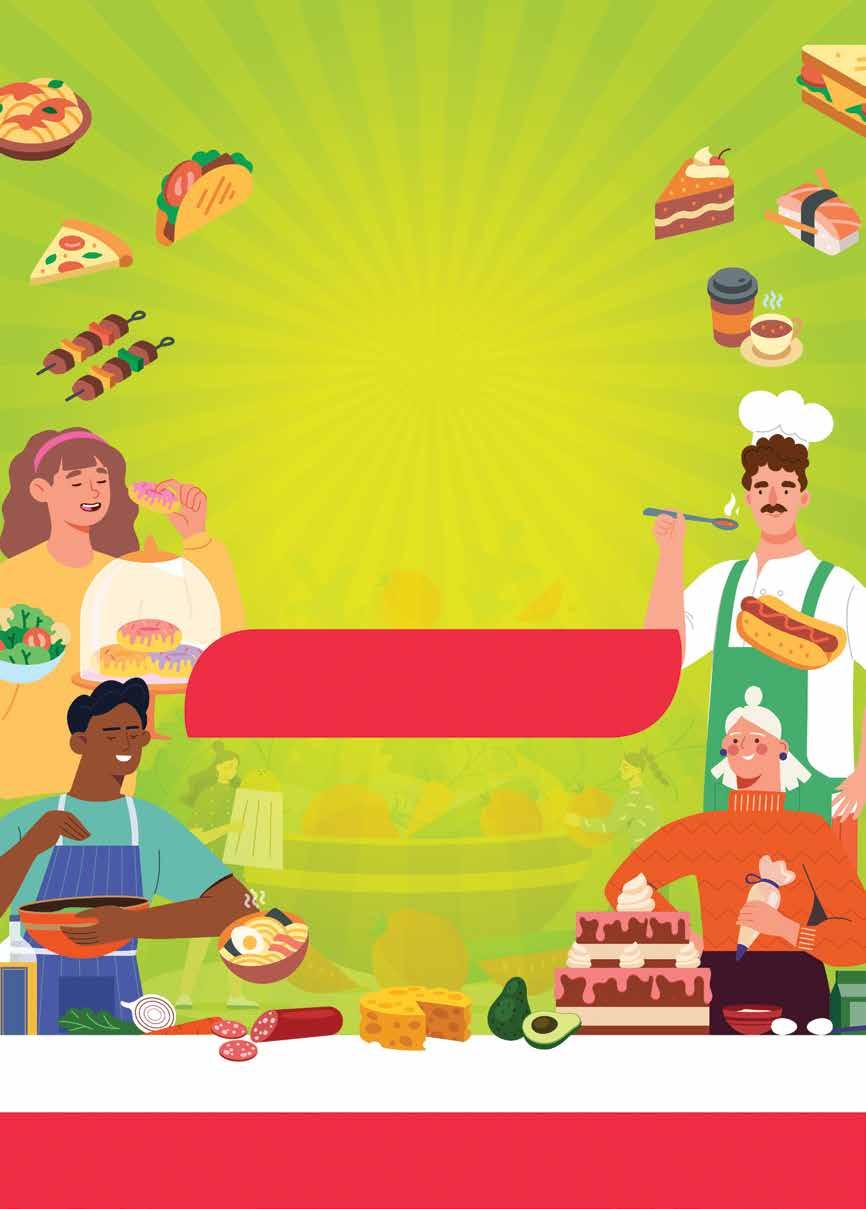


WORDS RACHEL HART
The world is a lot at the moment. From the cost of living to the state of the planet, it’s hard to hide from the headlines. Lately, when things get overwhelming, I don’t bury my head in the sand – I bury it in cookbooks. And in doing so, I’ve discovered a humble hero. An underrated overachiever. A vegetable with range, resilience, and the potential to save us all. Its name? Cabbage.
Let’s start with the climate. Cabbage is a hardy, cool-weather crop that doesn’t need much to thrive. It has low water needs and can hold its own against pests, heavy rain and even hail. It’s efficient with land, stores well and lasts for weeks in the fridge without complaint. You can eat almost all of it: even the tough outer leaves can be tossed into a slow-cooked soup or stock. And because cabbage grows just about everywhere around the globe, there’s little need for long-haul shipping. Basically, cabbage keeps things lowenergy, low-waste and drama-free.
Now, onto the cost of living crisis. We all want food that’s both nourishing and affordable, which, sadly, has become a big ask! Feeding the family is especially hard in winter, when produce gets pricier and more scarce. Enter: cabbage. This leafy legend is one of the most affordable vegetables you can find.
At around five dollars a head, a cabbage will stretch across multiple meals – coleslaw, stirfries, stews and noodle bowls – and it does more than just fill your tummy. As a cruciferous vegetable in the same family as broccoli, cauliflower, kale and kohlrabi, cabbage is packed with vitamins, full of fibre and loaded with antioxidants. It’s anti-inflammatory, gut-friendly and gives your immune system a boost, making it both budget-friendly and nutrient-rich.
So far, cabbage has stepped up to climate change and is helping slash our grocery bills. But that’s not all; it can also bridge the generational divide. It doesn’t matter how baggy your jeans are, where your hair is parted or whether your socks are showing, as one of the oldest cultivated vegetables in the world –dating back over 4,000 years – cabbage knows how to stay relevant. It was a staple in ancient Egyptian, Greek and Roman civilisations and it’s still popular today.
Yes, for a while cabbage had a bad reputation, so if you grew up with limp, smelly, overboiled cabbage, try roasting thick slices until the edges caramelise and I promise it will change how you see the world. Or shred it thinly and add to a vibrant salad tossed with a zingy dressing. Ferment it into Korean kimchi or German sauerkraut, or stuff it into Polish pierogi, Chinese spring rolls, or Mexican tacos.
There’s something deeply comforting about a food that shows up across cultures and regions: it proves that we have more in common than we think. Despite our differences, we all need to eat. We all crave warmth, nourishment and something to bring us together around the table. So next time the world feels a bit too much, just remember, the answer might be sitting quietly in your veggie drawer, plotting global harmony – one slaw at a time.

Rachel Hart
Hailing from Canada, Rachel has fallen in love with life in the beautiful Bay of Plenty where she is a freelance writer with a passion for healthy food. She splits her time between telling people’s stories, creating web content and experimenting in the kitchen.
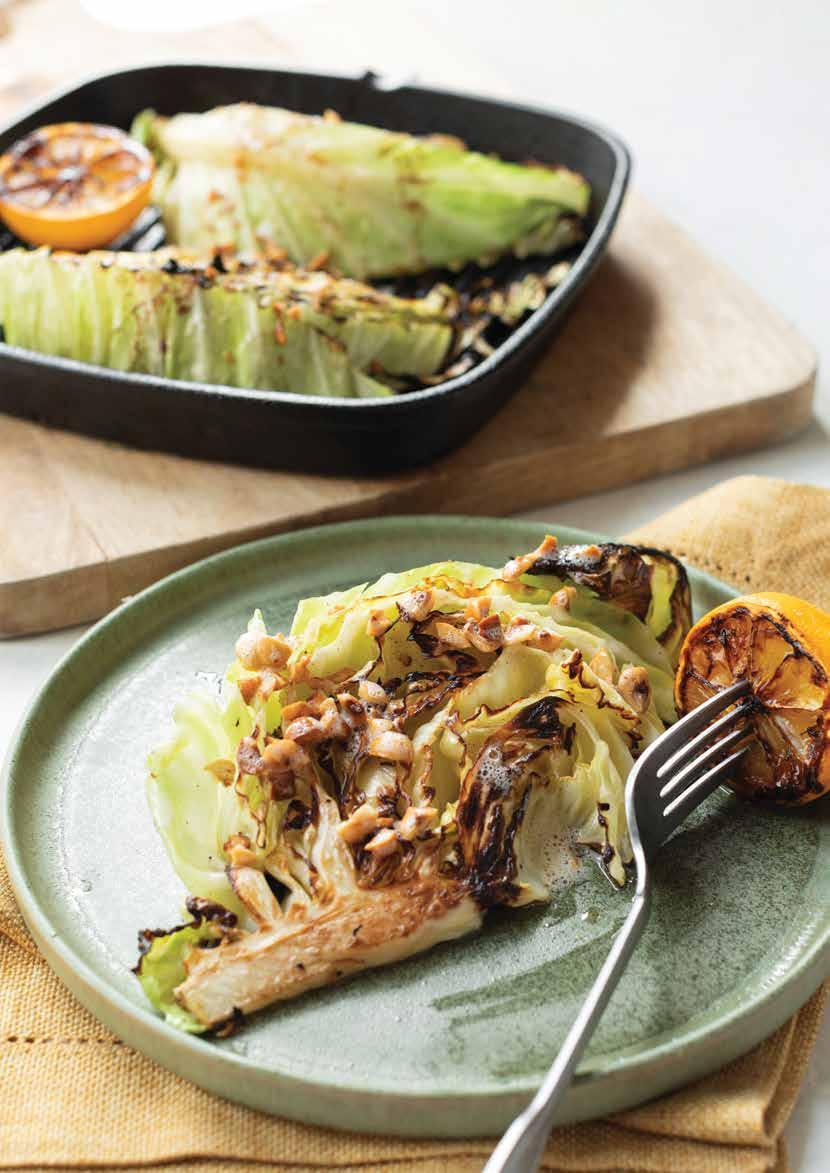
For me, cabbage is one of those vegetables that doesn’t come with fond childhood memories – be it the boiled variety that accompanied many a winter meal in the 80s or the horrors of the cabbage soup diet.
The fact is there are many more ways to enjoy this humble, ever so economical winter veg than boiling it!
Chargrilling your cabbage will give you a similar effect to baking it. A heavy cast iron pan works best. In warmer weather the BBQ is perfect.
For this simple recipe I burn some butter as the simple sauce, adding a beautiful nuttiness to the sweet cabbage.
olive oil
½ a cabbage, cut into wedges
salt
100g butter, cut into small cubes
¼ cup hazelnuts or pine nuts, chopped
Heat the pan with a drizzle of oil. Add the cabbage wedges and cook until they are charred on one side. Season with some salt before turning to repeat char on the other side. Once cooked remove from the pan and keep in a warm spot while you make the sauce.
Place the butter in the pan and allow to melt. Once melted continue to cook until the butter begins to foam. Stir or swirl the pan often so it cooks evenly. You want the butter to reach a brown nutty look and flavour. Take it off too soon and you just have melted butter, too late and it will be burnt. When you have reached the desired burn, add the nuts, stir and then drizzle over the charred cabbage.
I initially called this recipe sumac roasted cabbage but omitted the sumac from the title because this dish is just as delicious without the middle eastern spice.
If you aren’t already roasting your broccoli and cauliflower, I urge you to give it a try. The roasting gives you a different textural and flavour experience from raw or sautéed vegetables and this is just as true for cabbage.
½ a cabbage
extra virgin olive oil or avocado oil sumac (available at Vetro, learn more about sumac on page 36) salt & pepper
TAHINI YOGHURT DRESSING
¹⁄³ cup tahini paste (available at Vetro and The Herbal Dispensary)
1 tbsp honey or maple syrup
½ tsp cumin (optional)
3 tbsp lemon juice
1 small garlic clove, finely chopped
¼ cup boiling water
¾ cup Greek yoghurt salt

Cut the cabbage into 2 cm wedges. Try to ensure each wedge includes a piece of the stalk, as this will help keep them in one piece.
Place the wedges on a large oven tray and drizzle with your oil, season with sumac, salt and pepper. Roast until the edges are a dark gold brown colour and crispy.
Serve the warm roasted cabbage either on a smear of the tahini dressing or the dressing drizzled over top.
In a small bowl mix the tahini, honey (or maple), cumin (if using), lemon juice and garlic and whisk until smooth. Whisk in the boiling water before finally adding the yoghurt to form a smooth sauce. Check and adjust the seasoning. You may want to add more lemon juice.




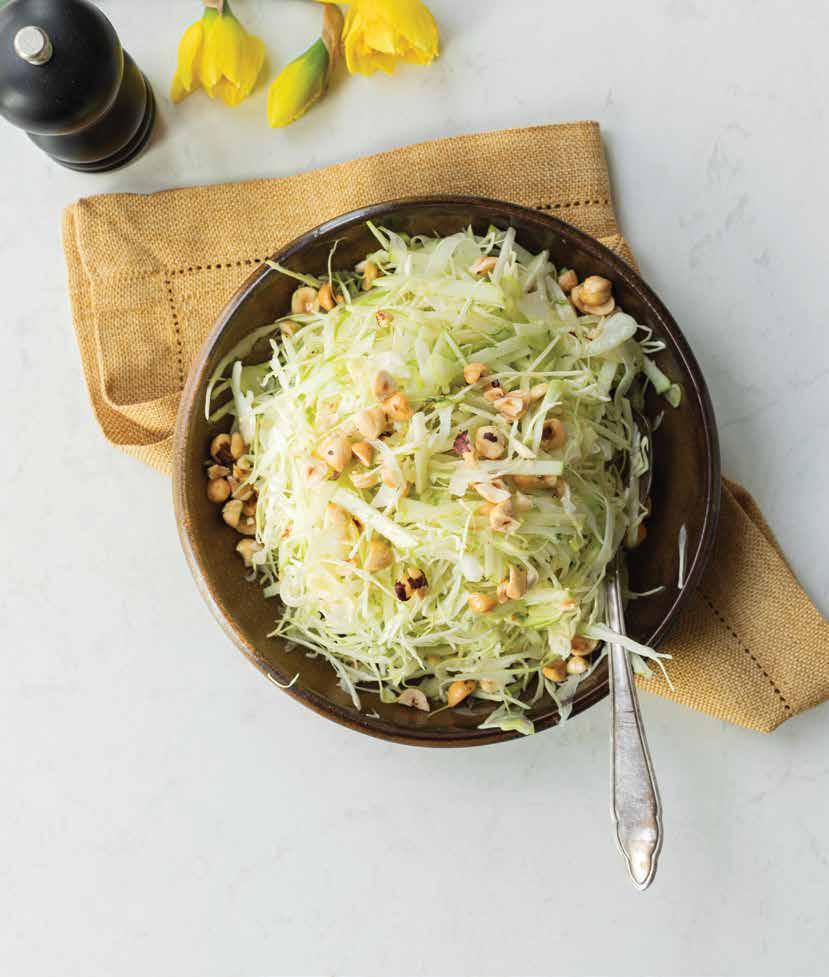

There is a difference between finely sliced and shaved cabbage. Trust me, I have tried to emulate the shaved cabbage served with the donburi I enjoy at my local Japanese restaurant without using a mandolin and the fact is it’s not the same. Something happens when you shave that cabbage so super finely, it makes it juicier and tastier.
So, sadly, to make this recipe you really do need a mandolin. The other thing you need for this seemingly simple salad is the patience to roast and remove the skins off the hazelnuts. Having said that, you can swap out the hazelnuts for another nut – finely chopped roasted almonds would work as would walnuts. Just don’t skip the nuts entirely.
½ cup hazelnuts
3 tbsp champagne vinegar (available at Le Cave and Vetro)
1 tsp Dijon mustard
1 tsp honey
½ tsp salt
¼ cup extra virgin olive oil
1 medium Granny Smith apple
1 large fennel bulb
¹⁄³ cabbage, shaved super thinly
Preheat oven to 180°C. Place the hazelnuts on a baking tray and roast for 20–25 minutes, giving them a shake halfway through. Let nuts cool slightly, then place in a tea towel and rub off skins.
Make the dressing by placing the vinegar, mustard, honey, salt and oil in a small jar. Place the lid tightly on top and shake well.
Cut the cabbage into two or three manageable wedges and use the mandolin to shave the cabbage as finely as you can. As the wedges get down in size be sure to use the guard!
Cut the apple in half, place on the mandolin guard, and slice just as thinly as the cabbage. Once both halves have been sliced, using your knife, slice them super thinly lengthwise to form thin matchsticks.

Finally, cut out the majority of the fennel core before thinly slicing this on the mandolin, stopping when you get to the stalks.
Toss the shaved vegetables with the dressing and top with roughly chopped roasted hazelnuts.
This is a dish I pull out all the time. I know! Cabbage and pasta, what is she thinking? But trust me, it is delicious and it will become your go-to on a midweek winter’s night when there is little else in the fridge but some cabbage.
I use pork and fennel sausage grind from L’Authentique (available at Vetro and La Cave). I usually have some in the freezer ready and waiting for this dish and it saves having to squish the meat out of the sausage casings. You can use a good quality pork sausage and, if pressed, bacon would also work.
300g fettuccini
neutral oil
1 onion, peeled and sliced
1 tbsp fennel seeds
300g pork and fennel sausages (available at Vetro, and The Herbal Dispensary), casings removed
¼ cabbage, shredded to similar thickness as the fettuccini
1 cup crème fraîche (I used Tatua) Parmesan
Place a large pot of water on to boil. Once boiling, add some salt and your fettuccini.
While this cooks, heat a little oil in a large fry pan. Add the onions, fennel seeds and sausage meat. Cook until the onions are translucent and the sausage meat begins to brown.
Add the cabbage and continue to cook for 2–3 minutes or until it wilts.
Drain the cooked pasta, reserving around ¼ cup of the cooking water. Add this along with the crème fraîche to the sausage and cabbage and stir. When heated through serve with lashings of freshly grated Parmesan.
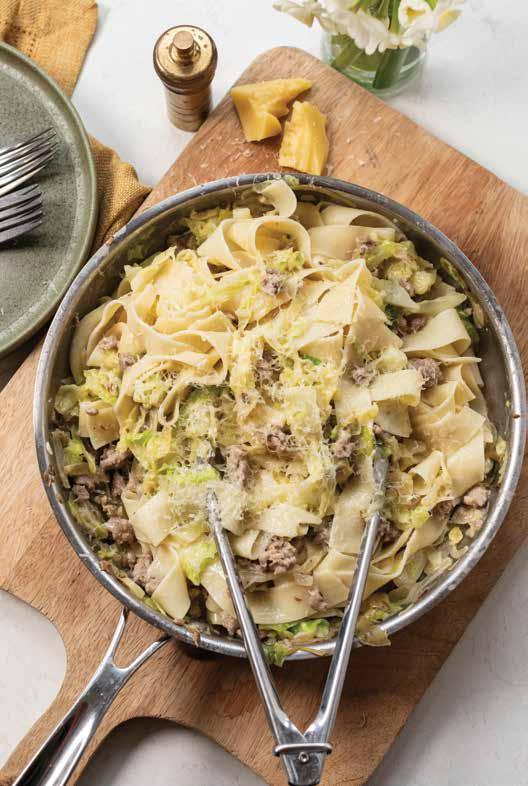
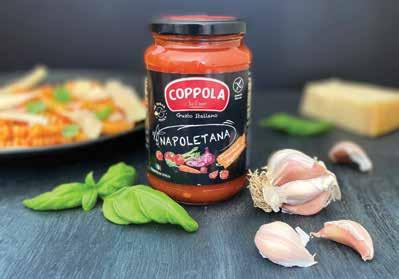

It’s in their name – Treetown Kitchens create beautiful bespoke kitchens, but their skill and expertise go further. From bathrooms and laundries to coffee nooks and entertainment units.
Hayley Hohneck, Operations and Marketing Manager at Treetown Kitchens, shows us what is possible with some examples of bathrooms the team have completed.


Top: Quality craftsmanship combines with timeless design to create this bathroom vanity that will always look good.
Above: This bathroom, designed with teenage girls in mind, comes complete with an appliance cupboard where the hairdryer, straightening iron and other beauty tools can be plugged in and stored yet are hidden away from view. Note the handy space for the laundry baskets too.
Left: This wall hung double vanity was created just for this space with the aesthetics and functionality part of the design.

In this bathroom the hero is most definitely the view but look a little closer and the details are everywhere, including the bespoke vanity with an elegant curve that echoes the bathtub. The handleless cupboards continue the minimalist look and don’t distract the eye.

The timeless Shaker profile is used in the cabinetry throughout this home from the kitchen through to the living room and bathrooms, giving a sense of cohesiveness while being far from bland.
Hayley says, “Custom vanities allow you to carry through the same materials throughout the home for a seamless look.”
Custom cabinetry can make spaces with angles like this toilet. It also means the cabinetry is cohesive in the design.
___
Treetown Kitchens treetownkitchens.co.nz

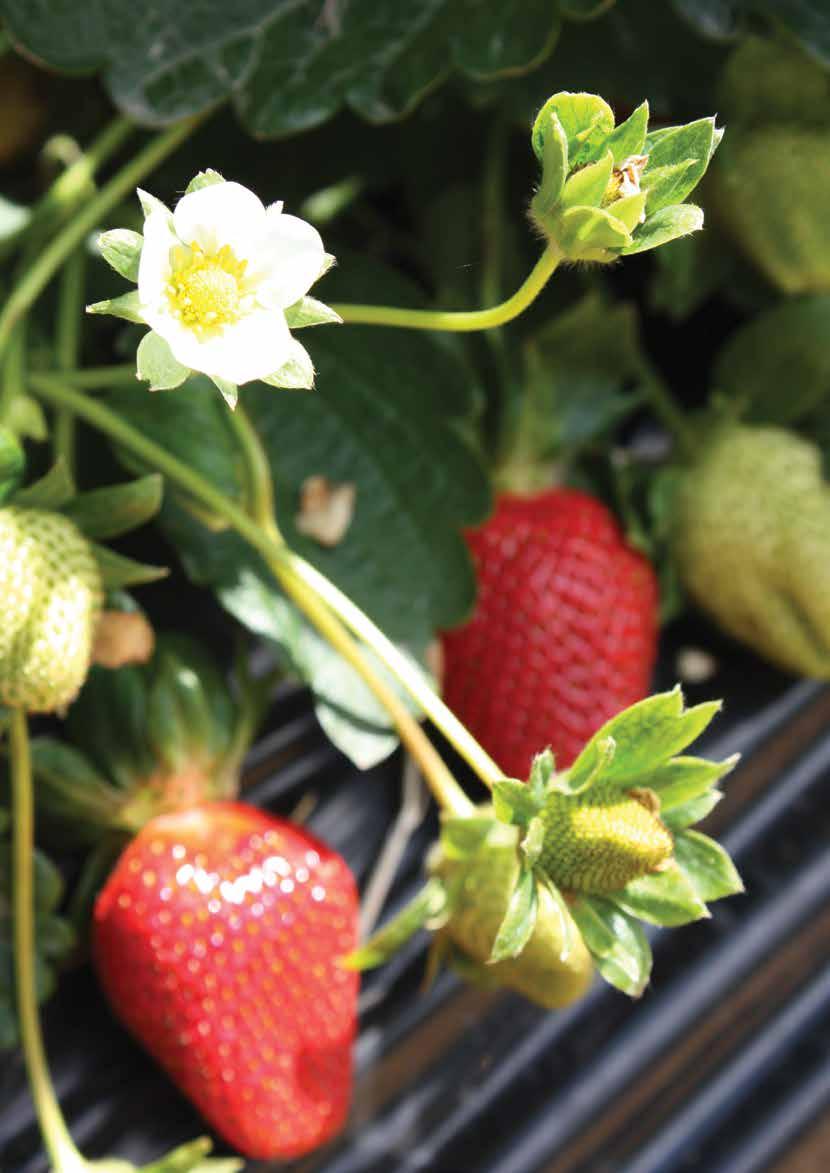
Are you already dreaming – dare I say, fantasising? – about the first sweet strawberries of spring? It might be a good idea to keep those dreams to yourself.
Apparently, when strawberries feature in our dreams, these slumbertime sightings symbolise desire, attraction, jealousy, passion and, if the website dreamdictionary.org is a reliable source, ‘a positive omen that a new romance is just around the corner’.
I’m no expert oneirologist (aka a scientific dream studier), but if you want to turn your strawberry growing dreams into reality, now’s the time to dig over the soil and get started. Choose a spot that gets all-day sun, dig in compost to improve drainage, add a generous dressing of balanced slow-release fertiliser and shape the soil into mounds prior to planting. Commercial growers cover their mounds with black polythene but in a home garden setting, mulching the ground with pea straw is the most attractive way to keep ripening berries from rotting when they come into contact with the soil.
There are two main types of strawberry varieties: short-day and day-neutral. Short-day varieties are triggered to bud and bloom when the days are short, which means they get cracking in late winter and produce a fat flush of large fruit in early spring. For this reason, they’re best planted now.
Day-neutral varieties, also known as everbearing or perpetual strawberries, can be planted later in the season because they’ll fruit on and off throughout summer until autumn, producing mediumsized fruit in smaller flushes over a longer period.
In years gone by, all strawberries were planted in winter because that’s when nurserymen dug up and divided their field-grown ‘crowns’. Our green-fingered forebears couldn’t simply pop to the garden centre for plastic punnets of strawberry seedlings on a whim; they’d have to wait for the winter delivery of rhubarb roots, asparagus crowns and bundles of bareroot strawberry ‘runners’ (the baby plantlets that form each summer on horizontal stems sent out by the mother plant).
In the late 1800s, nurserymen touting for trade via the Waikato Times’ classifieds offered a right royal selection of varieties including ‘Trollope’s Victoria’, ‘Duke of Edinburgh’, ‘Princess Royal’ and ‘Princess Imperial’ for the princely sum of four shillings
per hundred runners. That seems like a bargain these days, when a single plant might set you back $5 at your local garden centre come spring.
For the best chance of a constant berry supply, I'd advise you to start with at least 20 plants, choosing a mix of short-day and everbearing varieties. Although this upfront investment is costly, all going to plan, each plant will spawn a few runners each by the end of summer, giving you free plants forevermore.
Peg down the runners until they’ve rooted, then cut those umbilical cords and replant the babies. Do this every year, replacing up to a third of your older plants, including any crowns that aren’t doing well, to maintain their fruiting vigour.
Once your berry plants are nicely nestled into their new bed, protect with a sprinkle of slug bait. And, as soon as they start to flower, cover the bed with bird netting to keep unwanted beaks out, while still allowing bees in to fertilise the fruit. Although strawberries are self-pollinating, bees do a better job, increasing the size, shape and sweetness of the fruit.
• Confused about short-day and day-neutral? Just check the information on the plant labels; they’ll tell you which is which.
• In my garden, the most reliable fruiter is the short-day variety ‘Camarosa’, which has huge berries, but I always mix it up with less well-known varieties. Last year I also planted ‘Ventana’ (short-day) and ‘Aromas’ (day-neutral) and all three varieties cropped prolifically.
• Short-day varieties sold in punnets include ‘Chandler’, ‘Fronteras’, ‘Pajaro’ and ‘Victor’, while day-neutral names to look out for include ‘Albion’, ‘Cabrillo’, ‘Monterey’, ‘Temptation’ and ‘Valiant’.

Lynda Hallinan
Waikato born-and-raised gardening journalist
Lynda Hallinan lives a mostly self-sufficient life in the foothills of the Hunua Ranges, where she has turned a former sheep paddock into an organic no-dig vegetable garden at Sweetgum Cottage. Her garden is open to the public by appointment.
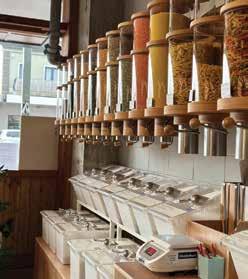
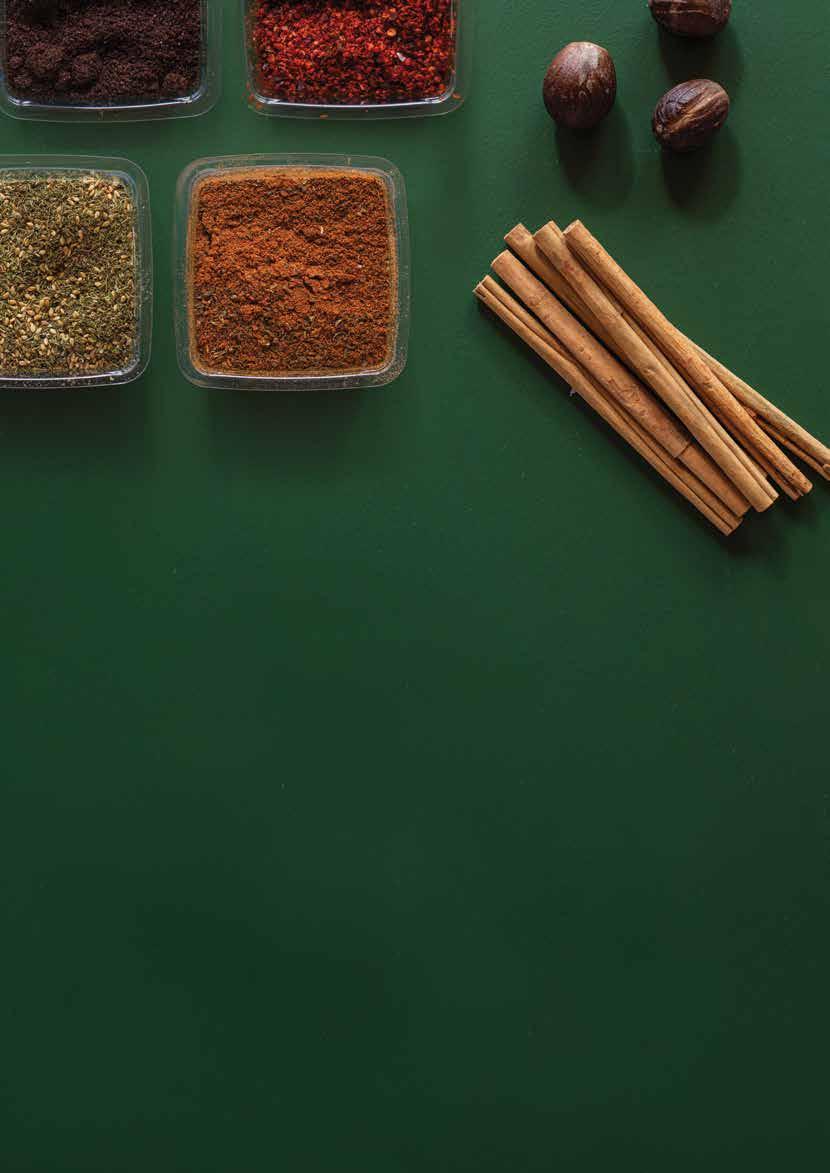
WORDS VICKI RAVLICH-HORAN | IMAGES ASHLEE DECAIRES
Unlike their flavour, the definition of a spice is a little weak. In essence, the leaf of a plant used to flavour food is an herb when every other part of the plant would deem it a spice, think cinnamon bark or root ginger, seeds, pods, berries and buds. While almost always sold in a dried form (the exceptions being turmeric and ginger), spices won’t last indefinitely. Their flavours will dissipate over time, especially if already ground, exposed to light and air. So buy fresh quality spices in the beginning, store them in airtight containers and, most importantly, use them!
Liz Cerdeira from Vetro says, “I find it is always good to have a good ‘smell test clean out’ every now and then and do a restock of those that are no longer giving off that wonderful spice smell they should be. But if you have no option when using older spices, try dry roasting them to bring out more flavour.”
If you’re keen to add more spice to your food, here are a few of our favourites.
Allspice, not to be confused with mixed spice, got its name in the seventeenth century when Europeans decided it tasted like a combination of cinnamon, nutmeg and clove. This dried berry is native to West Indies and Central America and a relative to the clove. Often used in savoury food as a flavour enhancer – I believe it quite possibly could be the eleventh herb and spice in an American colonel’s famous recipe. It’s also a spice found in Jamaican jerk seasoning and Swedish meatballs.
Testament to the power of smell and taste, cardamom is a spice I love, as it reminds me of my grandmother who added it to her spice fruit loaf. Like many spices, you can buy ground cardamom, but the pods are so much better! A member of the ginger family, indigenous to southwest India, cardamom has a warm, sweet, floral and fruity flavour often found in Nordic baked goods (think cardamom buns) and Arabic coffee along with many Indian curries.
CINNAMON
In New Zealand, more often than not, what is labelled cinnamon is in fact cassia. Both are made from a thin layer of bark rolled to make quills or ground.
Cassia has dark, thick, coarse quills, and a bittersweet, spicy flavour, while true or Ceylon cinnamon has brittle, smooth quills with a single spiral and a more delicate, floral flavour with hints of clove.
Liz says they stock both, labelling Ceylon cinnamon ‘premium’ cinnamon, and this is the one they recommend if taking cinnamon for health purposes.
“Cinnamon is probably one of my favourite spices, as it works both in sweet and savoury dishes. There really is nothing better than cinnamon infused dishes – be it preserved figs with cinnamon and ginger, mulled wine or that hint in a Mexican dish.”
Hard to find in New Zealand, mace is the lace-like coating that envelops the seed that is nutmeg. While similar in flavour to nutmeg, mace imparts a more delicate, yet distinctly piquant flavour. This makes it a wonderful choice for a variety of dishes, adding a subtle, warm spiciness that is both nuanced and comforting.

See, experience and taste true cinnamon and fresh mace on our Taste of Sri Lanka Tour with Emma Galloway in 2026.
Like nutmeg, freshly grated mace is by far the best, that is if you can get your hands on the dried blades vs ground version. These can also be added to cooking like you would a bay leaf to subtly enhance stocks, rice or stews.
Use in creamy desserts (custards, rice pudding or even chocolate mousse), sprinkle on your cappuccino or add into your cinnamon sugar for French toast.
SUMAC
Like salt, acid is a chef’s friend, which is why sumac is such a versatile spice. Sometimes described as a ‘dry acid’ it helps to bring out the natural flavours in many foods. Made from dried and crushed sumac berries, it has a tart, citrus-like flavour with sweet and earthy notes and is an essential spice in Middle Eastern and North African cuisines.
Add it to marinades and meat rubs, sprinkle on hummus or your avo toast, in salads or mix with a simple syrup to make a cheats lemonade.
Celery seed is literally the seeds of the celery plant. These teenytiny seeds unsurprisingly have a strong celery flavour. Used as a flavouring in ancient Mediterranean cuisine, and as a medicine in ancient China, celery seed is great in pickles, sausages and soups, or blend with salt to make celery finishing salt.
ALEPPO PEPPER
Originally from South America, the Aleppo pepper is the third most commonly used spice after salt and black pepper. I know, hard to believe here in New Zealand where we have hardly ever
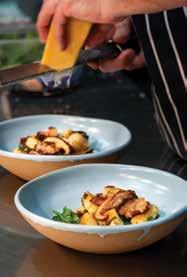
heard of it. But like the tomato and potato, introduced to the world from South America, it has been adopted by many for its versatility.
Unlike other chillies, the Aleppo pepper has a warm fruity flavour with only a mild chilli heat, which makes it the perfect addition to many dishes, from scrambled or Turkish eggs to salads to marinades, grilled fish, chicken or vegetables.
Also known as Halaby pepper, you can replace Aleppo pepper with ancho chilli or a combination of sweet paprika and cayenne pepper.
MIXING IT UP
Many regions around the world have a signature spice mix that encapsulates the flavours of their cuisine. Here are a few to try.
Za’atar is made from a blend of marjoram, oregano, thyme, sesame and sumac and is delicious sprinkled over hot flat breads, hummus and roast vegetables. Add olive oil for a dip or to brush over meat.
Baharat means spice in Arabic. Much like garam masala in India, baharat will vary from region to region but is usually a combination of black pepper, cumin, cinnamon, and clove. It is particularly good with lamb!
Harissa powder is a blend of smoked chillies and warm spices like cumin, coriander and caraway seeds. Add a liquid and use like you would the paste. It’s particularly good on chicken but also a lovely way to spice up some roast spuds.
Ras el hanout which means ‘top shelf’ in Arabic is a complex, aromatic spice blend famously associated with Moroccan cuisine. Again, the recipe for ras el hanout will vary. It often includes cardamom, nutmeg, anise, mace, cinnamon, ginger, various peppers and turmeric. Essential when making a tagine, but also a lovely mix to rub over meat.
Can’t find a particular spice, even among Vetro’s extensive range? Just ask the team. They are happy to see if they can source it for you.




Turmeric (or curcuma longa) is a flowering plant from the ginger family. Its vibrantly coloured rhizome is used as a spice, either fresh, or dried and ground into powder.
Historically it’s also been used for dying fabric (think of the characteristic colour of Buddhist monks’ robes). Aside from having a delicious earthy, peppery flavour, turmeric is thought to have beneficial anti-inflammatory properties – something we could probably all do with more of. Fresh turmeric has a brighter flavour and is easy to find at Asian supermarkets and greengrocers, but can be swapped for dry turmeric if that’s what you’ve got. As a general rule of thumb, one tablespoon (three teaspoons) of grated fresh turmeric is roughly equivalent to one teaspoon of dried ground turmeric.
These wholesome cookies rely on peanut butter, which gives them great flavour as well as a wee protein boost. Use your preference of smooth or crunchy (or smoochy, which is somewhere in between). Crunchy will leave small bits of peanut throughout the cookie, which is rather nice. Mildly spiced with turmeric, cinnamon and ginger, with chunks of dark chocolate, these are a hit with my kids and extremely easy to make. They’re a relatively soft, cakey cookie – if you prefer more crunch, cook them for a few more minutes. I used dark muscovado sugar because I had some, and I like the depth of flavour, but you can swap it for soft brown sugar if you prefer.
MAKES 16
1½ cups flour
1 cup dark muscovado sugar (available at Vetro and The Herbal Dispensary) or soft brown sugar
1 cup natural peanut butter (I used Pic’s Smoochy peanut butter)
150g (about 1 cup) roughly chopped dark chocolate (I used Whittaker’s Dark Block)
¼ cup + 2 tbsp plant milk of your choice
1½ tbsp fresh turmeric (peeled and finely grated)
2 tsp natural vanilla extract
1 tsp ground cinnamon
1 tsp baking soda
½ tsp ground ginger
pinch of salt (if using unsalted peanut butter)
Preheat oven to 180°C fan bake (or 200°C conventional oven).
Mix all ingredients together in a mixing bowl. Switch to using your hands once it becomes too thick to stir, ensuring everything is mixed evenly into this thick cookie dough.
Take heaped tablespoonfuls and roll into balls. Arrange evenly on a baking tray and use a fork to squash down a bit.
Bake for 15 minutes, until golden (or a few minutes longer for a crunchier cookie). Cool for a few minutes then transfer to a wire cooling rack. They will firm up a bit as they cool.



Amber Bremner | Quite Good Food www.quitegoodfood.co.nz
Amber Bremner is a Hamilton-based food writer and photographer, author of cookbook Simply Veg and popular plant-based food blog Quite Good Food A champion for food that’s good for both people and planet, Amber’s recipes are globally inspired, family-friendly and full of flavour.
Over 42 years of bespoke design, craftmanship and repairs of precious jewellery.
307 Barton Street, Casabella Lane, Hamilton P. 078390039 www.midasdiamondjewellers.co.nz

This simple noodle dish is inspired by the flavours of Vietnamese cha cá lã vong, a traditional Hanoi fish dish that features turmeric, black pepper, garlic and dill. I actually couldn’t find dill anywhere, so used coriander instead and the result is a delicious, fragrant, vibrant yellow bowl of noodles that kind of gives Asian aglio e olio vibes (if you know, you know). Don’t skimp on the black pepper, this recipe uses a generous quantity as the spicy element. And of course, if you have dill, feel free to use it instead of coriander. This is very quick to make (it can be on the table in under 10 minutes) and makes a great lunch or light meal as it is, or consider adding some salt and pepper tofu (see note) and steamed greens to make it a complete meal. I used Chinese flat wheat noodles which are sturdy and work very well here. You could also use rice stick noodles for a gluten free alternative.
SERVES 2 (GENEROUSLY)
PASTE
2 spring onions, very finely chopped
2 tbsp fresh turmeric (peeled and finely grated)
2 tbsp cooking oil
3 cloves garlic (peeled and finely grated, about 2 tsp)
2 tsp freshly ground black pepper
½ tsp salt
300g dry noodles of your choice
1 cup finely chopped coriander (or dill)
½ cup roasted cashews, finely chopped lemon or lime for squeezing

Stir paste ingredients together in a small bowl.
Bring a large pot of salted water to a rolling boil. Add noodles and cook according to packet directions (until just cooked). Chinese flat wheat noodles take about 4 minutes.
While the noodles are cooking, heat a large frying pan over mediumhigh heat. Add paste and cook, stirring often, for about 2 minutes, until fragrant. Add cashews and cook together for another minute.
When the noodles are done, drain them then add to the frying pan.
Use tongs to mix the noodles with the paste, cooking for another 1–2 minutes, until everything is evenly mixed and the noodles are vibrant yellow. Add the chopped coriander right at the end of cooking time, along with a splash of water if needed to loosen the noodles a bit.
Transfer to serving bowls, squeeze with lime or lemon and serve immediately.
NOTE: To make salt and pepper tofu, toss cubed firm tofu with half a cup of cornflour, 2 tsp freshly ground pepper, and 1 tsp roughly ground salt. Shallow fry until golden and crunchy.

I couldn’t imagine life without spices. They form the basis of so much of the food I cook, adding not only depth, flavour and colour but a myriad of health benefits too.

This simple curry comes together in the time it takes to cook rice. While the ingredients list looks long, it is mostly just spices. You can find fresh curry leaves at selected supermarkets and fruit and vege stores. They freeze well and can be used straight from frozen, meaning you’ll always have them on hand. For a vegan alternative, use firm tofu in place of the paneer and use coconut or olive oil to cook. Try to find a coconut milk that only contains coconut and water, to avoid unnecessary additives (Chantal Organics do a nice one).
SERVES 4
2 tbsp ghee, coconut or olive oil
1 x 300g packet paneer, cut into cubes
2 tsp black mustard seeds
leaves from 2 stems curry leaves
1 onion, finely diced
1 tsp cumin seeds
4 cloves garlic, finely chopped
1 tbsp finely grated ginger
1 red chilli, deseeded (if less heat is desired), finely chopped
2 tsp garam masala
2 tsp ground coriander
1 tsp ground turmeric
400ml tin good quality coconut milk
½ tsp raw sugar
1½ cups frozen peas juice of ½ lemon
cooked rice + coriander leaves, to serve
Heat 1 tbsp ghee/oil in a large frying pan over medium-high heat and fry paneer cubes until golden on both sides. Set aside until needed. Heat a medium heavy-based saucepan over medium heat, add remaining 1 tbsp ghee/oil, then mustard seeds and curry leaves. Cook until the seeds start to pop, then add diced onion and cumin seeds. Reduce heat and cook gently for 8–10 minutes, stirring often until deeply golden and tender. Add garlic, ginger and chilli and cook for a further 30 seconds before adding garam masala, ground coriander and turmeric. Cook 20 seconds, whilst stirring, then pour in coconut milk and ¼ cup cold water. Bring to the boil, add cooked paneer, sugar and ½ tsp fine sea salt. Bring to the boil, then reduce and simmer for 5–8 minutes, until sauce is thick.
While that’s cooking, boil the jug. Place frozen peas into a bowl and cover with boiling water. Set aside for 2 minutes, then drain and add to the curry. Stir well and cook for a few minutes until peas have heated through. Remove from heat, add lemon juice, check and adjust seasoning, if needed. Serve hot with rice and coriander leaves.
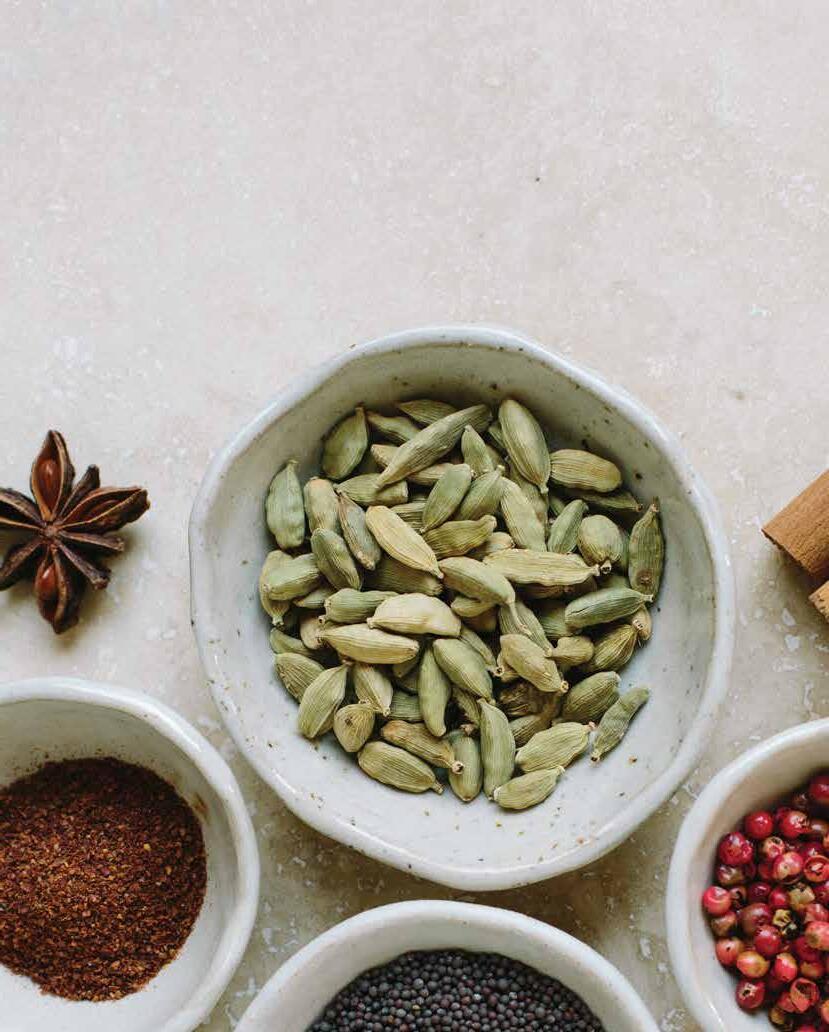






Emma Galloway | mydarlinglemonthyme.com @mydarlinglemonthyme | @tahu.ceramics
Best-selling author of three cookbooks and awardwinning blogger, Emma Galloway is also a chef, photographer and budding potter. After years of living overseas, she has settled back in her hometown of Raglan, where she is inspired by the seasons and her extensive veggie garden.
On wintery days I crave bottomless cups of homemade chai. Filled with warming spices and rooibos tea for a caffeine-free alternative, this chai is like a warm hug. Of course, use black tea leaves if preferred.
SERVES 2
1½ cups milk of your choice
2 tsp loose-leaf rooibos tea leaves (available at The Herbal Dispensary and Bare at Made) or the contents of 2 tea bags
2 tsp ginger, finely grated
4 cardamom pods, bruised
3 whole cloves
¼ cinnamon stick, crumbled (or ¼ tsp ground cinnamon) few grinds of black pepper
1–2 tsp coconut sugar or honey, to taste, optional
Combine milk in a small saucepan with 1½ cups water, tea leaves, ginger and spices. Bring to the boil and simmer for 2 minutes. Add sweetener to taste, if using. Strain into cups and enjoy hot.
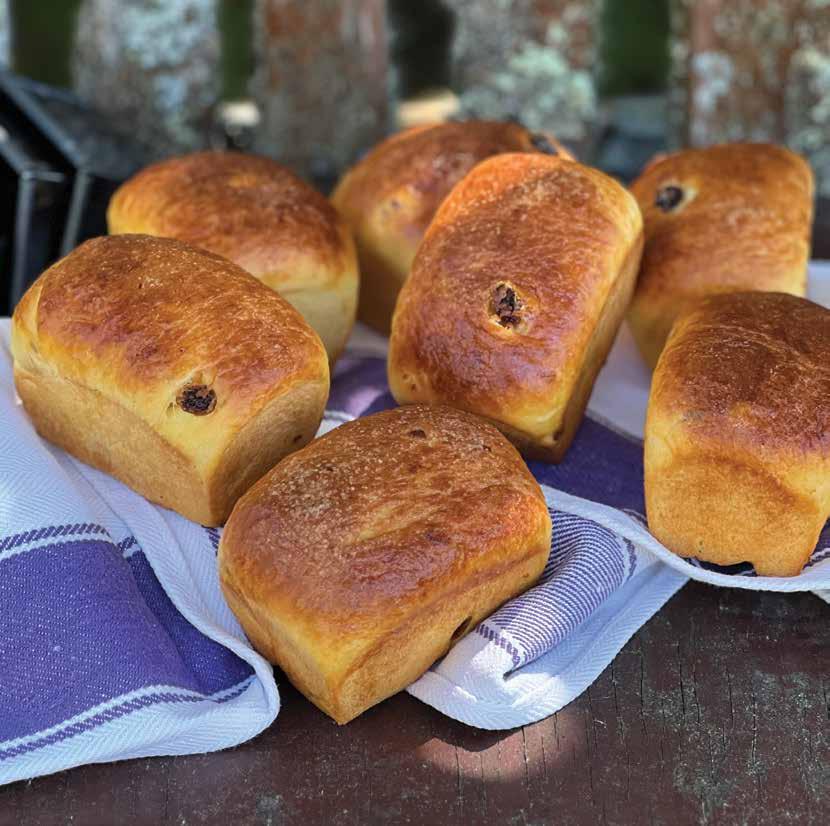
RECIPES + IMAGES KATHY PATERSON
David Lebovitz, a well-known food writer living in Paris, tells us he forgoes owning a car and buying shirts at Hermès so he can buy the best saffron – don’t you love that. There is such a thing as ‘fake’ saffron, so look for a reliable source – Wynyard Estate Saffron in Central Otago is a very good place to start.
I tend to follow Indian cooks who often warm saffron threads in a cast-iron pan before soaking in liquid to bring out the saffron’s colour further. Remove from the pan and leave for a minute so it is brittle before crushing between your fingers into the chosen liquid.
I figure we have more time inside in the winter, so both these recipes are put into motion the day before. However, I have given you the option of making the same day as well.
Best eaten not long from the oven, but any leftover loaves can be sliced and toasted the next day. They are particularly good sliced and toasted then spread with butter and orange marmalade. Loaves can be frozen too.
When you are working with yeast remember to always work in a warm, draught-free kitchen.
Here I have let the dough rise slowly overnight in the fridge until it has doubled in size, but you can forgo this and rise in the warm kitchen then proceed with shaping and baking.
12
BEGIN THIS RECIPE THE DAY BEFORE.
1 orange a good pinch of saffron threads (available at The Herbal Dispensary and Vetro)
500g bread (or strong) flour
1 tsp salt
4 tbsp caster sugar, plus extra for sprinkling
2 tsp instant dried yeast (I use Edmonds all purpose active yeast)
150ml warm milk
100g butter, softened, plus extra for greasing
6 tbsp sultanas or raisins
1 small egg, lightly beaten
Peel the rind from the orange with a vegetable peeler, leaving behind the white pith, which is bitter. Blanch rind in boiling water, drain and rinse under cold water then dry well on kitchen paper. Finely chop and set aside.
Warm the saffron threads in a heavy-based pan, if wished. Remove from the pan and leave for a minute before crushing in your fingers into a cup. Warm 150ml water then pour half over the saffron and leave to infuse.
Put 1 tablespoon of the measured sugar in a small bowl. Sprinkle over the dried yeast then pour over the remaining warm water. Leave to froth (about 5 minutes). Note, if the yeast doesn’t froth after 5 minutes then begin again. I find water on the hotter side of warm works best, but not so hot it destroys the yeast.
Sift the flour and salt into a large bowl. Add the remaining sugar. Make a well in the centre and pour in the warm milk. Add the yeast mixture and cover in the flour from the sides of the bowl. Add the softened but not melted butter, the sultanas or raisins, orange rind and the saffron with its liquid. Mix together using a spatula.
Tip the dough out on to a lightly floured bench and knead until the dough is no longer sticky and is springy to the touch, about 10 minutes. (This can be done in an electric mixer with a dough hook).
The dough should be sticky to begin with. Use extra flour on your hands to help you knead. The softer the dough the better the end result will be.
Wash and dry the bowl then very lightly oil. Put in the dough, turn over to coat surface in a very thin film of oil. Cover bowl (I use compostable plastic wrap and a clean tea towel). Put in the fridge and leave overnight to rise until the dough doubles in size.
The next day, remove the dough from the fridge and bring back to room temperature.
Put 12 mini loaf tins in a large shallow baking tray. Lightly grease each tin.
Tip the dough on to a lightly floured bench and knead once more for a few minutes. The dough should feel warm to the touch. Cut dough in half and then each half into 6 pieces. I like to weigh each piece so the loaves are of even size and bake evenly.
Shape each piece into a loaf shape and put in each tin. Brush with the egg wash and sprinkle with extra sugar. Cover loosely again with compostable plastic wrap and a thin tea towel. Leave until the dough rises just to the top of the tins and has a lovely loaf shape.
Meanwhile, heat the oven to 200°C.
Once the loaves have risen sufficiently, remove covers and put loaves in the oven. Bake for 12–15 minutes until the tops are well browned.
Remove from the oven and tip a loaf from its tin and tap the bottom. If baked well it should sound a little hollow.
Serve warm with butter.
TIP: For a more pronounced orange flavour, omit blanching and simply finely grate the zest of the orange.

NZ’S LARGEST RANGE
Of party & cake decorating supplies!
FIND US
on the corner of Rostrevor & Harwood Streets, Hamilton.


A fresh and crunchy salad with warm saffron-infused chicken thighs gives a little light relief from those heavier winter meals.
BEGIN THIS RECIPE THE DAY BEFORE.
SERVES 4
a good pinch of saffron threads
1 small onion, coarsely grated
5 tbsp plain thick yoghurt
2 tbsp extra virgin olive oil, plus extra for the salad
600g boneless and skinless chicken thighs
1 lemon
1 radicchio, leaves separated and torn into small pieces
4 handfuls of small salad leaves
a few green olives, pitted and cut in half or sliced
Warm the saffron threads in a heavy-based pan over a gentle heat. Remove and leave for a minute before crushing with your fingers into a cup. Pour in 2 tablespoonfuls of warm water and leave to infuse for about 10 minutes.
Put the onion, yoghurt, oil and the saffron with its water in a bowl. Add the chicken thighs, season and cover. Leave in the fridge overnight. (Or you can marinate for a few hours if you want to cook the same day.)
The next day, juice the lemon and stir 1 tablespoonful through the marinated chicken. Leave covered to return to room temperature
(about 30 minutes) then drain the chicken in a large sieve to remove excess liquid.
Heat a large frying pan or ridged pan (to give you grill lines) over medium heat. Add the chicken thighs and cook for 8–10 minutes until cooked through. This will depend on the size of your chicken thighs. Remove, season with salt and set aside to rest while you assemble the salad.
To serve, fill a good-sized shallow bowl with the torn radicchio leaves and the salad leaves. Drizzle over a little olive oil and the remaining lemon juice. Slice the chicken thighs and arrange over the salad. Scatter over the olives.
TIP: Cut one more lemon into wedges for serving, if wished. Or if your salad is too acidic, counteract by adding a dash more salt.

Kathy Paterson
A plentiful herb garden, citrus trees and a trial and error vegetable garden give Kathy the starting place for her recipes along with her love of the classics with a modern twist.
Named one of Aotearoa NZ’s Top 50 Most Influential & Inspiring Women in Food and Drink 2024, Kathy is a food writer, recipe developer, food stylist and photographer. www.kathypaterson.co.nz







Luxury doesn’t begin to cover what you’ll find here, but expectation starts at the tree-lined driveway. Set amid 2.5648ha of stately grounds, including three grazing paddocks, this mansion sprawls over three levels; more than 804 sqm of opulence, and personalised space.
Five super-king suites exude the sense of a premium hotel. Ensuites with spa-bath indulgence, lounge relaxation and Juliet balconies to bask in the scenery; overlooking the swimming pool and gardens, lake and countryside. Downstairs revolves around entertaining like an exclusive club. A chef’s kitchen and scullery cater for many; casually amid intimate surroundings, or formally in the banquet lounge. Boasting an underground wine cellar, sound-proofed for added versatility and wine connoisseurs, there’s no end to the features of treasures here.
Phone me today for further information or to arrange a viewing 021 623 550!



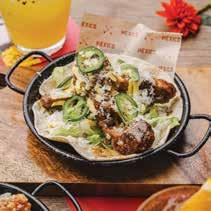
As the cold months descend, it’s time to find some heat elsewhere. No, we don’t mean abroad, we mean in your food, and Hamilton Central has a huge array of options to help you spice things up. Here are just a few.
1. GOTHENBURG – 17 Grantham Street
The kings of fusion in the Tron, Gothenburg’s tuna tartare is served on crispy furikake rice and features a gochujang spiced mayo. Gochujang is a Korean sauce made from fermented red chilli, giving the tartare a spicy umami hit. Add it to your must-try dishes at Gothenburg.
2. BREEZE INDIAN RESTAURANT – 16 Hood Street
Breeze Indian Restaurant say their dum biryani, while not overly hot, offers a rich, well-balanced spice profile that highlights the depth and complexity of Indian cuisine. Prepared using the traditional dum cooking method –marinated meat (chicken or lamb) is layered with long-grain basmati rice, caramelised onions, saffron and a blend of whole and ground spices, including cardamom, cinnamon, cloves and bay leaves. The dish is then sealed and slow cooked over a low flame, allowing the flavours to fully develop, resulting in tender meat and perfectly spiced rice, perfect for a cold winter night.
3. MEXICO – 254 Victoria Street
From just a tickle to a fiery lip smack, the team at Mexico say they have you covered with their menu inspired by the streets of Mexico.
Their jalapeño chicken taco has a jalapeño and yuzu sauce that is tangy, slightly spicy and pairs deliciously with the salty crumbed chicken tenders. With extra pops of sliced jalapeños, the spicy hit slowly creeps up on you.
4. THE CHILLI HOUSE – 237 Victoria Street
We are told the sour spicy noodles are a customerfavourite at The Chilli House, showcasing their house-made noodles (handcrafted daily for the perfect chewy texture) featuring their Sichuan charred chilli oil. This labour of love blends roasted Sichuan peppercorns, star anise, bay leaves, cinnamon and fennel with a fiery trio of chillies: Chongqing’s ultra-spicy Shihong Zhu, Sichuan’s Bullet Head,
and Xinjiang’s Wrinkled Skin varieties. Toasted premium soybeans and peanuts add nutty depth, creating a complex heat that tingles without overwhelming.
5. NUA – 337 Victoria Street
Winter is the perfect time to enjoy tom yum soup from Nua. This famous Thai hot and sour soup, typically made with shrimp (tom yum goong), although other versions include chicken (tom yum gai) and mixed seafood, is known for its bold, aromatic flavours – spicy, sour, salty and fragrant all at once. The Nua team assure us they can adjust the heat to your liking from mild, medium to hot and if you dare Thai hot!
6. FLYING BURRITO BROTHERS – 65 Bryce Street
Flying Burrito Brothers are firing up the drinks with their spicy guava margarita – a perfect balance of sweet, spicy and tart with a jalapeño garnish and chilli salted rim.
7. HALWAI SWEETS AND RESTAURANT – 829 Victoria Street
Veg chow mein is a stir-fried noodle dish made with vegetables like capsicum, carrots and cabbage. It's flavoured with soy sauce, vinegar, hot chilli sauce and spices, offering a savoury, tangy taste. Often garnished with spring onions, it's a popular and tasty vegetarian option at Halwai Sweets and Restaurant.
8. PENANG STREET FOOD – 941A Victoria Street
There’s a reason why laksa is the ultimate comfort food when the weather turns cold. The combination of warming spices, creamy coconut milk and nourishing ingredients makes it not only delicious but incredibly satisfying. Spices like chilli and ginger help boost circulation and keep the body warm, while the rich broth offers the ultimate winter indulgence. Try an authentic version at Penang Street Food.

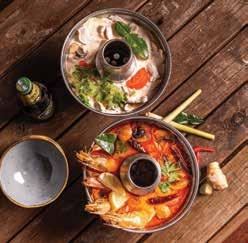




Minestrone is the kind of dish that reminds a cook why they fell in love with food in the first place. It’s generous, adaptable and bursting with goodness. A true Italian classic, this rustic soup isn’t about precision – it’s about intuition, about using what’s in season, and about coaxing the best out of simple ingredients. The word minestrone comes from minestra, which simply means soup, but don’t let the simplicity fool you. There’s a reason minestrone has been a staple in Italian kitchens for centuries: it transforms humble ingredients into a deeply pleasing meal in a bowl.
Minestrone isn’t just soup – it’s an experience, an invitation to slow down and appreciate the process of cooking. The act of chopping, stirring, and simmering feels almost meditative, a welcome break from the fast-paced demands of modern life. It also lends itself beautifully to sharing. A big pot of minestrone means there’s always enough to go around, whether it’s feeding a busy family or a gathering of friends. And like many good things, it only improves with time, the flavours deepening and mingling overnight, making leftovers something to look forward to.
One of the great joys of making minestrone is that there’s no single way to do it. It’s the ultimate seasonal dish, changing with the availability of fresh ingredients. A winter minestrone, thickened with starchy root vegetables, hearty greens, and borlotti beans makes sense. While a spring version will be light and brothy with fresh zucchini, green beans, and basil. Whatever the approach, minestrone is a lesson in resourcefulness, encouraging cooks to embrace what’s available rather than follow a rigid recipe.
The foundation of a great minestrone is patience. It usually starts with a slow, gentle cook of onions, carrots and celery, which builds the aromatic backbone of the soup. This step can’t be rushed; the vegetables need time to soften and sweeten, creating a depth
of flavour that carries through every spoonful. Then comes the layering of ingredients: the tomatoes releasing their bright acidity; the beans, such as cannellini or borlotti, adding earthiness; and the pasta or rice bringing body. Each addition is an opportunity to taste and adjust, to balance saltiness and sweetness, richness and freshness.
Seasoning is where the magic happens. A sprinkle of Italian herbs – think oregano, thyme, or rosemary – elevates the flavours, while a Parmesan rind simmered in the pot adds an extra layer of savoury richness. I save the rinds in the freezer; they’re a game-changer for soups like this. And a swirl of good olive oil or a dollop of pesto added at the end will give the soup a fragrant lift.
From a cook’s point of view, minestrone is a perfect example of what makes cooking so rewarding. It’s a dish that connects us to tradition, to the rhythm of the seasons, and to the joy of nourishing others. It teaches us that great food doesn’t have to be complicated; it just has to be made with care. Whether served with a crusty loaf of bread or simply on its own, a well-made bowl of minestrone is a reminder that sometimes, the simplest dishes are the most satisfying.

Julie Le Clerc is a former cafe owner and chef turned food writer, stylist and photographer. She loves creating doable, flavour-driven recipes inspired by seasonal local produce and assorted world cuisines. Julie has written a bunch of best-selling cookbooks that reflect her cafe background, love of baking, and culinary travels. When she’s not in her own kitchen, you’ll find her dreaming about inspiring destinations, near and far, or off on an eating adventure.


Minestrone typically includes some kind of beans, pasta or rice, as well as vegetables, and the ingredients are always left chunky – it's never blended. As all the wholesome ingredients are so full of flavour, it’s possible to simply add water instead of stock, which makes this an economical meal in a bowl.
SERVES 10–12
2 tbsp olive oil
1 large onion, chopped
2 cloves garlic, crushed
2 large carrots, peeled and diced
2 sticks celery, diced
2 x 400g can crushed tomatoes (from Vetro)
2 tbsp tomato paste
2 bay leaves
3 sprigs of thyme
4 cups liquid vegetable stock or water
1 large potato or kūmara, peeled and diced
100g dried pasta, such as macaroni or small shells
400g can borlotti beans, drained
handful flat-leaf parsley leaves, roughly chopped
TO SERVE:
Freshly grated Parmesan cheese
Extra virgin olive oil
Crusty bread, if desired
Heat olive oil in a large, heavy-based pot set over medium heat. Add the onion, garlic, carrots, celery and a little salt, and cook for 10 minutes, stirring regularly, or until the vegetables have softened.
Add the tomatoes, tomato paste, bay leaves, thyme and stock or water and bring to the boil. Now add the potato or kūmara, and the pasta, cover the pot and simmer for 10–15 minutes, or until the pasta is just cooked and the soup has thickened to your liking.
Stir in the borlotti beans and parsley and cook for a couple of minutes, to heat through. Taste and adjust seasoning with salt and pepper. Serve topped with grated Parmesan and a generous drizzle of extra virgin olive oil.
This soup’s rustic charm makes it easily adaptable to whatever vegetables you have on hand. Feel free to adjust the balance – if you prefer more pasta and fewer beans, go for it. In spring or autumn, try swapping the broccoli for zucchini or green beans.
SERVES 10–12
2 tbsp olive oil
1 leek, thinly sliced
2 cloves garlic, crushed
3 sticks celery, diced
1 large waxy potato, peeled and diced
6 cups liquid vegetable stock or water
piece of Parmesan rind, if available
1 head broccoli, roughly chopped
1 cup frozen peas
handful fresh parsley leaves, chopped
200g gnocchi (available from Vetro and The Herbal Dispensary)
400g can cannellini beans, drained
100g baby spinach leaves (or other leafy greens such as silverbeet or kale), chopped
TO SERVE:
Basil pesto
Freshly grated Parmesan cheese
Extra virgin olive oil
Heat olive oil in a large, heavy-based pot set over medium heat. Add the leek and a little salt and cook for 5 minutes, stirring often. Add the garlic, celery and potatoes, and cook for 5 minutes, stirring often.
Add the stock or water and the Parmesan rind, if using. Bring to a boil then turn down the heat to simmer for 10 minutes.
Add the broccoli, peas, parsley, gnocchi and cannellini beans; simmer for 5–10 minutes or until the gnocchi is cooked and broccoli is tender.
Right before serving, remove the Parmesan rind and add the leafy greens. Adding the spinach or other leafy greens at the last minute will retain their colour. Simmer for 2 minutes more, until the spinach is just wilted. Taste and adjust seasoning with salt and pepper.
Serve with generous amounts of pesto stirred through and top with grated Parmesan and a drizzle of extra virgin olive oil.

Waikato Innovation Park, Ruakura admin@weaveeatery.co.nz 021 108 8072 weaveeatery.co.nz

RECIPES + IMAGES FIONA HUGUES
In a world seemingly obsessed with health and wellness, somewhat boring broths and savoury soupy elixirs are appearing in all the bourgeoise spots frequented by the bendy fitspo crew (those active wear types all freshly unwound and retreated).
Each to their own, but cynical me (who prefers a wild dash in the wind, an ocean plunge or a dose of shit shovelling and weeding to get grounded) does enjoy and sometimes need a warm bowl of spoon-able nourishment in the cooler months. Mind you, I’ll only solitarily consume it – all that sucking, slurping and mopping of slop will have me uncentred and wanting to garotte any other gruel guzzlers close by.
Dicovered by archaeologists, the world's oldest recipe for soup from 6000BC called for hippopotamus, sparrows, vegetables, lentils and spices. The thought of Gloria from the Madagascar movie and my dear pet sparrow Ernie brewed together in a cauldron is the thing of mind warping and nightmarish fairy tales, but alas it seems soup has all sorts of sinister stories chronically attached. From goulashes of stones, bolts, buttons, wood and nails designed to deceptively lure lowly villagers to share food to dark forests full of wicked witches hunched over steaming cauldrons stuffed with a conglomeration of small children and sweet animals, soup history has all the creepy baggage.
Cue muddy festered Medieval castle courtyards – before the name ‘soup’ came about, a gruel-like meal called ‘pottage’ was a common dish among the peasant folk. It apparently was a nutritious soup filled with vegetables and grains and often served with a loaf of dark, crusty bread. The swanky wealthier individuals of the Middle Ages added meats and expensive ingredients to their mishmashes but still, in the original manner, served it slopped over bread.
And here, dear readers, I finally get to my point – the word soup comes from the French word soupe (‘soup’ or ‘broth’), derived from Latin suppa – ‘bread soaked in broth’, from which also comes the word ‘sop’, a chunk of bread used to soak up soup or a thick stew.
Voila, there it is, bread and soup were simply made to be together.
So with all these historical hodgepodges and brew ups in mind, here is my extremely adaptable version of our good old family boil up, oozing with Scots grain, with plenty of suggested bready
and tasty accompaniments to serve alongside.
Go forth warriors, make this dish that’s particularly good when one is feeling off colour, ill or even perfectly pert. Mind though, don’t go throwing your pets or children into the pot.

Fiona Hugues | Born in Hamilton, multiinternational award winning food stylist & creative multi-hyphenate Fiona Hugues spent her childhood gallivanting around the Waikato countryside on horseback. After Hillcrest High School, Elam School of fine Arts took her to Auckland where she now resides on a rural property with her French husband, teenage children & a plethora of animals. From photographing food, art directing commercial campaigns to designing restaurants, her creative skills have encompassed a multitude of genres. Named one of Aotearoa New Zealand’s TOP 50 Women in Food and Drink to watch in 2024 she brings the beauty of food, the joy of eating and art of making things look good to her many clients, and these pages.
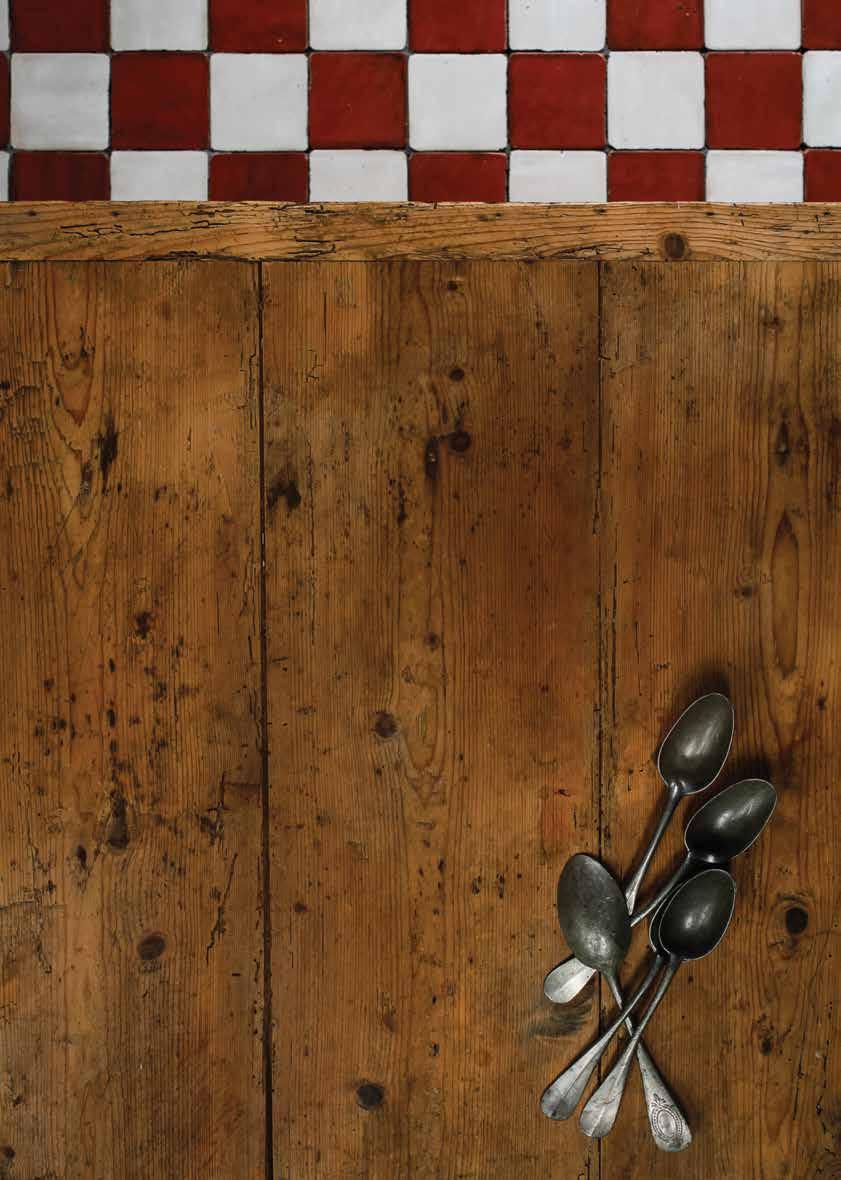

Custom Wardrobe Systems
Entertainment and Study Units | Garage
Sliding Doors | Laundry
Home Storage

– A TASTY MISHMASH TO CURE ANY MALADY
She’s named ‘Malady Melange’ as the word ‘malady’ [pronounced "MALuh-dee] is derived from the Latin words male, meaning ‘bad or ill’ and habitus for ‘have, hold’. When one has a malady, it’s like something bad is holding you, such as an illness, a dose of the seasonal snots or just maybe the malady of a depressing cold winter’s day. By adding bread in any shape or form to this magically medicinal brew, my lord, you’ve got one hell of a miserable day remedy cradled in a steaming hot bowl.
Ingredients are just suggested; use whatever you fancy or have handy. Bone-in cuts of meat are best used, just for decent depth of flavour. My high recommendation is that to each bowl you load in a decent dollop of crème fraiche. The richness and sour notes it adds are rather something not to be missed.
chicken thigh cutlets, skin on, bone in (or try beef shins, lamb necks)
1 cup pearl barley, rinsed and soaked in water overnight
2 leeks, chopped into 3cm lengths (or brown onion, sliced)
4–5 garlic cloves, sliced
2 fennel bulbs (or half a celery bunch), sliced 3mm thick baby carrots or chopped carrots (optional)
peeled lemon zest and a squeeze of juice
1 cup good white wine (or a slop of whiskey)
2 litres of chicken stock
salt & pepper
olive oil
spring onions, sautéed (optional)
a hunk of old Parmesan rind
crème fraîche and some bready things to serve

Rinse the barley and boil for around 20 minutes until al dente. Drain and set aside.
In a large saucepan or high sided casserole, over medium high heat with a little olive oil, fry the chicken thighs on both sides until crisp and golden. Set aside.
Add the leek, garlic, fennel, and carrots (if using) to the pan with the peel of lemon zest.
Stir or shake the pan then slop in the wine to deglaze the lovely flavours from the bottom. Cook for a minute or so to get rid of the alcohol and then add the stock.
Bring up to a simmer and return the chicken to the pan and add the Parmesan rind. Cook for 12–15 minutes or until chicken is pulling off the bone.
Stir through the cooked barley, season, and add a squeeze of lemon juice to taste.
Serve hot in bowls with an unashamed amount of crème fraiche and spring onions.
HUNKS OF FRESH SOURDOUGH OR CRUSTY LOAF - toasted or not.
CROSTINI, CROUTONS & CROUTONETTES (I made that name up but it sounds cute) – To a jar add melted butter, a slop of olive oil and a few cloves of crushed garlic to taste. Shake and leave to get to know each other for half an hour then brush on to cut pieces of slightly stale bread. Bake on lined trays at 190°C until golden and crisp. Store in airtight containers for a fortnight or so.
FOR THE PANGRITATA – Throw some of the above croutons into a processor, add some herbs if you fancy and whizz to make a loose crumb. Perfect to sprinkle over pasta too.
MOZZARELLA TOASTIES – Brush slices of sourdough with the garlic butter or olive oil and sandwich grated mozzarella sprinkled with Tasty or Parmesan cheese if you want more flavour. Grill in a panini press until golden and the cheese is oozing.
CHEESE TARTINES (not pictured, my kids ate them) – Slice baguette or sourdough thinly, brush with the garlic butter and sprinkle with a little cheese. Bake on lined trays as above, until crisp, melted and golden.
CRISPY PANCETTA – Lay slices of pancetta or prosciutto on lined trays and bake until crisp. Allow to cool and crush onto the top of soup or pasta.
AND LAST BUT NOT LEAST – FRIED LARDONS OR CHOPPED BACON RASHERS, LEMON WEDGES and it should be compulsory in my mind, lots of CRÈME FRAÎCHE

I can’t remember ever having had a blood test that didn’t come back saying I was low in iron. I have had nurses ring me in a panic when my tests have come in. I have been turned away from giving blood because my iron levels were too low, yet no one has ever asked why.
Sure, I have had iron supplements prescribed or suggested, but no doctor has ever followed up or looked at the cause of this deficiency let alone the impact on my body and life because of it.
So when I heard Dr Libby was releasing a book dedicated to iron and its effects on the body, I knew I needed to read it.
I have long been a fan of Dr Libby’s approach, with her ability to break down complicated biochemistry and the body’s mechanics in a clear and concise way while also providing some answers and practical ways to change.
“My mission,” Dr Libby states, “is to educate and inspire, enhancing people’s wellbeing and wisdom, igniting a ripple effect that transforms the world.”
This book, Fix Iron First, is no different. Unlike some of her other books that we immediately identify with the topic (think Rushing Woman’s Syndrome) this one may seem very specific but is, in fact, broader, as she explains the essential role iron plays in our lives from birth through to menopause and beyond.
“What if,” Dr Libby asks, “the majority of perimenopausal suffering is due to a combination of subtle or significant poor nutritional and metabolic health parameters that we can, too easily, accumulate over the first half of life? What if progesterone and estrogens have been acting as buffers, softening the experience of what’s been compounding beneath the surface up until now?”
Dr Libby says, “Often, when we feel lousy, we assume the solution to our health challenges must be complex or multifactorial. Yet, many answers are remarkably simple – and resolving iron deficiency is one of them. Iron is fundamental to countless processes within the body. Time and again, I’ve witnessed how, through restoring iron levels, so much else falls into place, sometimes in ways patients describe as life-changing. No part of the body is untouched by insufficient iron, which is why it is often the one thing whose correction can create a ripple effect, improving multiple aspects of our health.”
“Your body is not something to fight against or ‘fix’. It is a masterpiece – resilient, wise, always working for you. Nourish it, trust it, listen to it and watch how it transforms in response to care, rather than deprivation and judgement.”
DR LIBBY
Dr Libby says the fact “that iron deficiency is the most common nutritional deficiency globally is unacceptable to me. Part of my inspiration in writing this book is to bring this topic back to the forefront of conversations so that there is far less unnecessary suffering. Too many people live knowingly or unknowingly with iron insufficiency or deficiency, not always aware of the far-reaching consequences of tolerating this deficit.”
It was Dr Libby who motivated me to delve deeper into what I had always thought was ‘normal’ after listening to her webinar series. The light bulb moment was when she said the only symptom of menstruation should be bleeding, all the others we commonly accept are not normal. I am truly grateful for this advice, as it not only made a huge difference on me, it has given me knowledge I can pass on to my daughter, so she doesn’t experience the hormonal chaos I did through my teens, twenties and thirties!
So as I enter perimenopause and I’m reading Fix Iron First, I’m having a similar penny drop experience. Dr Libby says perimenopause “is a hot topic which has led to it being blamed for almost any uncomfortable symptom experienced by women anywhere from their late thirties to their mid-fifties. Everything from weight gain to brain fog, anxiety to itchy ears, gets linked to the changes in estrogens – predominantly estradiol – and progesterone that occur during this stage in life. Yet if the changes in hormone levels were the sole driver of challenging symptoms, every woman would suffer, and this is not the case. Many women go through perimenopause with mild or few signs that they are in the midst of this transition.” She’s right! Why are some of my friends sailing through yet my hair is falling out and I can’t get a good night’s sleep?
For over 25 years, Dr Libby has been helping people understand their bodies – and how to support them. And one deficiency has come up more than any other: iron. It affects energy, mood, sleep, thyroid function, hormones and even cognition. It is needed for growth, development, and appetite in children. Yet it’s still too often missed, misdiagnosed or mistreated with supplements that are poorly absorbed or harsh on the gut. This book is essential reading for every woman, you will take away such essential knowledge on the function of iron in not only your body but that of your children, especially your daughters.
In Fix Iron First, she not only breaks down why iron is essential at all stages of life, she covers the different types of iron, how your body absorbs it (or in many cases doesn’t), the role other minerals and vitamins like copper and vitamin A play and essentially what you can do about it.
No part of the body is untouched by insufficient iron, which is why correcting this alone can create a ripple effect. Dr Libby says, “People who have lived with exhaustion for years describe finding they can think more clearly and have energy to engage with more enthusiasm in life’s daily tasks. Some with anxiety explain how these feelings become less intense, making life far more manageable. Others share how they wouldn’t use the word anxiety any more to describe how they feel. For some, their hair stops falling out. It’s not just about fixing one symptom but rather creating a chain reaction that enhances your overall wellbeing.”
Alongside the book, Dr Libby has also released Bio Blends Iconic Iron. Made from organic peas, it is an entirely plant food-sourced iron supplement – the first (and only) of its kind globally. The result of eight years of research and five years of development, Iconic Iron contains ferritin iron which has a unique absorption mechanism that overcomes the usual hurdles to robust iron absorption, making it highly bioavailable and friendly on your gut.



with caponata, and the beef tenderloin served with pommes Anna, mushroom croquette and peppercorn sauce. There is also an entirely plant based degustation offering for those following a vegan diet or alternatively those curious to know how good plantbased dishes can be.
When the team at the Regent Rotorua invited us to spend the weekend, I didn’t have to be asked twice. I love hanging out in Rotorua, as there is so much to do. In fact, a weekend is not long enough, unless it is one of many planned.
The Regent, conveniently located on Pukaki Street in the heart of Rotorua’s town centre, is a great spot to base yourself. This little slice of Palm Springs is just around the corner from Rotorua’s Eat Street and a short stroll to the lakefront.
With a pool, crucially heated to 27°C, you can enjoy a dip first thing in the morning or in the afternoon accompanied with a cocktail.
Our room was everything you need in a stylish and spacious package. Dinner in the restaurant ticked all the boxes, including the fussy ten-year-old’s tastes. We opted for the trio of lamb dish
One of the things I love about Rotorua is the bakeries. These are not in town or on the main tourist routes, instead they are hidden on the outskirts of town.
But trust me, it is worth hunting out these local secrets. A bakery is a godsend when travelling, especially as a family, as you can grab lunch to take with you, whether you are off mountain biking, walking through The Redwoods, exploring the lakes or visiting a geothermal park.
Here are my top picks.
Patrick’s Boutique Bakery - Only open Monday to Friday, so a good reason to stay longer than a weekend. Tucked away on Lake Road you will find a tempting array of goodies, from magnificent mille-feuille, to gorgeous chocolate eclairs, perfect opera cake, flaky croissant and gourmet pies.
Everything is made the old fashioned way from scratch and you will often see Patrick and the team hard at work in this tiny bakery punching above its weight.
Ciabatta - Hidden in an industrial part of Rotorua (38 White Street), Ciabatta is a Rotorua institution, as the crowds on any given day will attest to.
What started as a bakery that specialised in making the lightest, softest ciabatta made using a long ferment process, now produces some tempting treats, most notably their cronuts.
You can pick up a loaf of bread or a beautiful filled roll or order

from the menu with more elaborate sandwiches like the Reuben or their famous Long Dog or a Teenie Weenie.
Guidough’s - I first discovered Guidough’s when I tried their cinnamon roll in a local coffee shop. One bite and I had to hunt down the source. It turned out Guidough’s has two bakeries, one in Springfield Road and another in Ranolf Street. These no frills bakeries are what I love about Rotorua bakeries, it’s all about the quality baking.
Guidough’s range is spectacular, so one of your challenges will be deciding what to enjoy, the pinky bar slice, filled doughnut or cinnamon roll, a mac ‘n’ cheese pie or a classic quiche are just a few of your choices.
Other Rotorua top picks
Scope – Consistently one of the best cafes in Rotorua with great service and food to match. (1296 Tutanekai Street)
Poco – The perfect spot for a drink with a wonderfully curated


Redwoods. They are also open late on Fridays for pizza so book the Redwoods night walk on a Friday night to join the two.
(Longmile Road, Whakarewarewa)
Mr Wolf – The new offering from the Okere Store team, Mr Wolf pairs a beautiful fit out with food to match. (1167 Fenton Street)
A local secret, mainly because the only way to get there is by boat or sea plane, are the hot pools on Lake Rotoiti. These hot pools, which have been enjoyed since 1849, are a real slice of Kiwi fun.
If you know someone with a boat, hit them up, otherwise it’s a seaplane or a boat tour to get you there. We opted for Katoa Jetboat.
We jetted off from the lakefront at 1pm. With some thrilling spins along the way, we arrived 45 minutes later at the serene hot pools. While Zoe proceeded to jump off the jetty into the lake, we supervised while soaking in the mineral spa.
– A perfect spot for brunch after exploring The
Although the day we went was stunning, I can imagine the
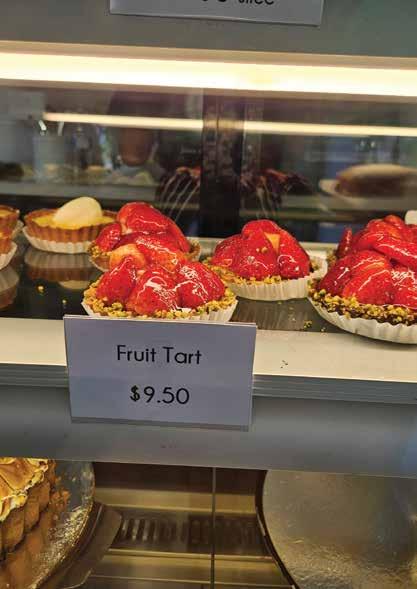

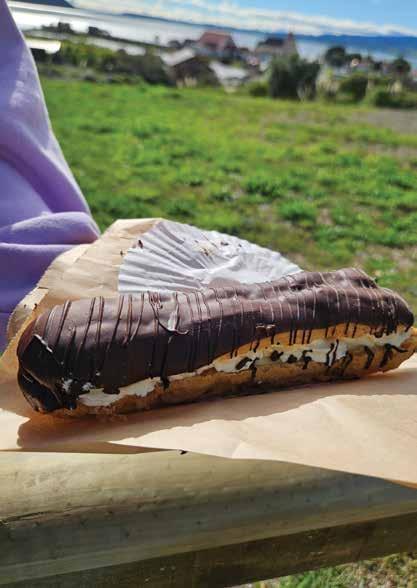


attraction of the pools on a chilly winter’s day or a clear starry night. They are open from 8am to 10pm, 365 days of the year, so both are options to consider.
Natural wonders are in abundance in Rotorua, be it a natural spa, gorgeous lake, an awe-inspiring geyser or mesmerising mud pools. If you are intent on experiencing some volcanic action there are a number of places to visit, including the lakefront walk behind the Government Gardens and Kuirau Park, both of which are free. Kuirau Park even has hot pools to soak your feet in.
We were keen to explore nature and get a dose of adrenaline so booked with the award-winning Canopy Tours. Ziplining through New Zealand native bush has long been on our family to-do list.
Named by Tripadvisor as The World’s Best Nature Activity in 2021, New Zealand’s #1 Activity in 2022, South Pacific’s #1 Activity in 2023, and New Zealand’s #1 Activity again in 2024, Canopy Tours is most definitely about getting your thrills but it’s also about being in the environment.
Co-founder James Fitzgerald loved ziplining and had done many around the world. What he believed most lacked and what he wanted to create was the most engaging zipline experience in the world, one where location was key. When he found Dansey Road Scenic Reserve (Okoheriki) he knew he had found the perfect location.
Okoheriki is the ancestral land of Tura Te Ngākau Ki Ngongotahā and is managed by the Department of Conservation. To operate on this land, Rotorua Canopy Tours has approval from manawhenua and a commercial concession from Te Papa Atawhai.


Their strong sustainability stance and conservation efforts aid in this perfect partnership.
While I loved soaring through the air at 50km/hr, the real experience was the vantage point. Being up in the canopy looking down at our native forest gives you a true appreciation for what is ours as Kiwis. And seeing the difference Canopy Tours have made to this virgin bush in the 13 years they have been operating is amazing.
Notably the only Kiwis on the tour, we trekked into the bush with our two guides. Over the next three hours we would zip across six different lines, walk across two swing bridges, discover the lengths Canopy Tours go to in predator control, and hand feed a North Island robin (Toutouwai).
We walked away on a high as well as with a deeper understanding of New Zealand’s unique natural environment. ___
Regent of Rotorua
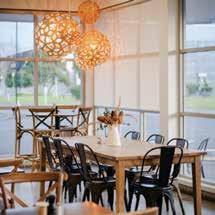
Open 6 daysMonday - Friday 7-4 Saturday 7.30-2.30
1191 Pukaki Street, Rotorua regentrotorua.co.nz 69 Mahoe Street, Te Awamutu | 07 871

After years working with farming families across the Waikato, I’ve seen just how naturally the skills built on the land can translate into smart investing. It’s about weathering storms, thinking longterm, and building something lasting for future generations.
Whether it’s growing wealth beyond the farm gate, planning for life after farming or succession for the next generation, having the right support can make all the difference.
Below are six reasons why Mark Lister, Investment Director at Craigs Investment Partners, believes farmers can make good investors – and how the same qualities that built successful farms can help build strong, lasting financial futures.
WE HAVE A LOT OF CLIENTS FROM FARMING BACKGROUNDS, EITHER PAST OR PRESENT. THEY’RE GREAT PEOPLE, AND MANY HAVE SPENT DECADES OVERCOMING A PLETHORA OF CHALLENGES TO BUILD VERY SUCCESSFUL BUSINESSES.
When the time comes to think beyond the farm, investing in a portfolio dominated by shares, listed property, private equity and fixed income doesn’t always come naturally.
Having less control and influence is a mental hurdle for some, while diversifying far and wide can also be a new concept. However, farmers that can get their head around these differences often become very astute investors.
THEY APPRECIATE THAT RISK CAN COME FROM ANYWHERE.
Farmers can be cautious and slightly cynical at times. You’d never hold that against them, and that thoughtfulness often serves them well.
Farmers have an awful lot of risks to consider, many of which are outside their control.
Commodity prices, interest rates and the currency are obvious ones, and these are often driven by global factors that are difficult to predict.
Government policy changes are an ongoing risk, most obviously here at home but also offshore. If incentives or regulations change in other countries, that can impact the cost structure or supply response of other regions.
Then there’s the weather. Even if you get everything right, a bout of bad weather can torpedo an entire season.
Share investors have an equally long list of things to worry about, and many of these are just as hard to predict.
Like farming, investing success is as much about risk management as it is about picking the right stocks or forecasting where markets are headed.
Keeping your eye on the long game can be difficult, especially when you’re in the thick of a bout of short-term market turmoil, but it’s non-negotiable for any good investor.
The return from US shares since 1950 has been 11.4 per cent per annum (including dividends), with positive returns coming in any 12-month period on 79 per cent of occasions.
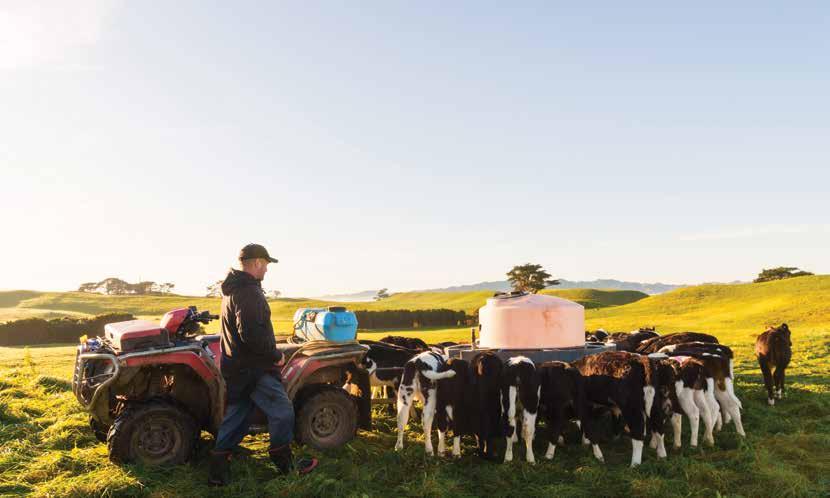
However, over short-term holding periods the variation can be huge. The best 12-month period was a 60 per cent gain, and during the worst, US shares fell 43 per cent (that was in the GFC).
It’s not dissimilar with farming. Anything can happen over the short-term and bad years are simply par for the course.
Like a great piece of land, a good quality share portfolio will just about always do well over the long-term, which is what most of us are investing for.
The hard bit is keeping your cool when the short-term is looking more difficult.
THEY UNDERSTAND THAT FUNDAMENTALS ALWAYS TRUMP FADS.
Fashion and fads will always come and go. Along the way, prices and valuations can get out of whack, while markets can become overly pessimistic or exuberant.
However, the value of an asset is ultimately a function of the cash flows and returns it can generate, even if those are some time away in the future.
Investing in quality assets (be it land or businesses) that are difficult to replicate, generate solid returns, and which are exposed to long term structural trends will always trump jumping on the latest bandwagon.
THEY HAVE A HISTORY OF INNOVATION.
New Zealand is blessed with a climate that lends itself to successful agriculture, but our farmers have also been very innovative over the years.
In part, this was forced upon many after farm subsidies were removed in the 1980s, during a period where other parts of the world benefitted from more generous government support.
This need for constant improvement, innovation and reflection will resonate with investors. If we look at the world’s most dominant companies from 30 to 40 years ago, few of these would find themselves on the same list today.
The farming landscape will continue to evolve, as will the economy, while sharemarkets and companies require constant scrutiny.
Those who embrace change and appreciate that nothing is set in stone are best placed for continued success.
THEY UNDERSTAND LEVERAGE CAN BE A DOUBLE-EDGED SWORD.
The financial term for using other people’s money to invest is leverage. When asset prices are rising, leverage can make you very wealthy, supercharging your returns.
However, in a flat or falling market high debt levels can do the opposite, by magnifying your losses.
Many farmers have lived through an era of much higher interest rates, and some will have seen their peers get into trouble by overpaying and overleveraging.
When it comes to analysing companies, balance sheet strength and an ability to ride out a potential downturn is a key attribute investors should look for.
THEY RECOGNISE THE NEED FOR GROWTH ASSETS.
Many farmers will remember the 1970s and 1980s, when inflation was running at an annual rate of more than ten per cent.
Even at just three per cent, inflation is still the enemy of investors and those looking to maintain their spending power.
Over 10 years inflation of this level will reduce the true value of your capital by more than a quarter.
Land has always been a great asset for those looking to insulate themselves from the scourge that is inflation.
Growth assets like listed property, shares and interests in private companies can help continue this after the farm has been sold.
In the last 50 years, New Zealand shares have returned ten per cent per annum (including dividends). Over the same period, the average inflation rate has been 5.2 per cent. (Inflation was very high in the 1970s and 1980s, before slowing markedly from 1990 onward.)
That means the local sharemarket has provided a real return (which is the annual return in excess of the inflation rate) of close to five per cent per annum.
Shares provide returns from capital growth, as well as dividend payments. Capital growth comes from a rising share price, while dividends are an income stream that is paid by the company to shareholders out of profits.
Great companies endeavour to steadily increase earnings and dividends over time, which provides investors with another element of inflation protection.
For more information or advice on how you can invest in the current environment, contact Craigs Investment Partners adviser Dwight Egelhof - phone 07 981 2556 or email dwight.egelhof@craigsip.com.
Disclaimer: This article is general in nature and should not be regarded as specific investment advice. It does not take into account your financial situation, objectives, goals, or risk tolerance. All investments involve risk and can go down as well as up. Craigs Investment Partners Limited is a NZX Participant firm. Dwight Egelhof’s adviser disclosure statement is available on request and free of charge. The Craigs Investment Partners Limited Financial Advice Provider Disclosure Statement can be viewed at craigsip.com/terms-and-conditions. Please visit craigsip.com.
Written by Mark Lister, Investment Director, Craigs Investment Partners

Dwight Egelhof
Dwight Egelhof, Craigs Investment Adviser based in Hamilton, encourages locals to reach out for a conversation.








SUPPER CLUB AT EVERYDAY EATERY
Date night? Girls’ night? Come enjoy a meal, drink some wine and have a good time. Three-course dinner with drink match option.
Last Saturday of each month at 6pm www.everydayeatery.co.nz/supper-club
WONDER HORSE COCKTAIL CLUB
Take a journey through the history of cocktails, a taste of three spirits used in two unique and delicious cocktails (and sometimes other things), and a tasty little treat from the team at Wonder Horse.
$50pp
Last Thursday of the month, 6pm–8pm email matias@wonderhorse.co.nz to book
MATARIKI SILENT DISCO
Dance into the new year with us under the Matariki Stars!
Wednesday, 18 June, 5.30pm–7.30pm
$35pp (includes headphones, soup & bread, and a glass of mulled wine – limited tickets available)
33 Jellicoe Drive, Hamilton East www.hayescommon.co.nz
KAI WHETU
Three New Zealand culinary stars, six courses with matching wines, one stellar night.
$195pp incl wine matches
Sunday 22 June, Palate Restaurant
356 Victoria Street, Hamilton palaterestaurant.co.nz
PALATE TRUFFLE DEGUSTATION
The annual ode to truffle season with five magical dishes celebrating truffle.
$150pp + optional wine matches
Wednesday 2 July, 6pm
346 Victoria Street, Hamilton palaterestaurant.co.nz
THE GREAT NZ FOOD SHOW
Take your tastebuds on a culinary journey and experience a fantastic day out with family and friends, sampling the latest foods, wines and delicious products.
Saturday 5 July & Sunday 6 July
Claudelands Event Centre, Hamilton www.greatnzfoodshow.co.nz
BASTILLE EVENING WITH WAYNE GOOD
Enjoy a wonderful night of French food, refreshments and entertainment.
$125pp, Sunday 13 July
128A Whitikahu Road, Gordonton Bookings to wayne@arkanda.co.nz
NEIGHBOURHOOD EATS: A TASTE OF FRANCE (AND A TOUCH OF SPAIN) FROM OUR TRAVELS
A night inspired by Brent and Lisa’s recent journey across France and a vibrant corner of Spain. Enjoy a taste of the stories, moments, and meals that stayed with them.
Thursday 17 July, 6.00pm–9.30pm
$110 per person ($140 with wine matching)
33 Jellicoe Drive, Hamilton East www.hayescommon.co.nz

ARKANDA WORKSHOPS
Join Wayne in the kitchen for a fun day of food learning something new. 128A Whitikahu Road, Gordonton
COOKING WORKSHOPS
One day hands-on workshop 10am–1pm
Cost $95pp
• Pasta Making June 28/29
• French Baking and Desserts July 12/13
• Pickles and Chutneys July 26/27
COOKING DEMONSTRATIONS





Cost $100pp
One day demonstrations 9.30am–1.30pm
• Winter Cooking from the South West of France August 9/10
• Northern Indian Cooking August 23/24
__ Book email wayne@arkanda.co.nz
HERITAGE TRADING CO WORKSHOPS
LAYERED SLOW STITCHING FASHION PIECE
Cost $75
Where 40 Duke Street, Cambridge
When Thursday 28 August, 7.00pm
Book heritagetrading.co.nz
FALLS RETREAT WORKSHOPS
BREAD MAKING WORKSHOP
Nothing beats the smell of a freshly baked loaf! Learn how to make your own sourdough bread at home. Morning tea, lunch and your own sourdough starter to take home all included
When Saturday 14 June or Friday 27 June
Cost $165pp
KOMBUCHA MAKING WORKSHOP
Fermenting is a simple process but it needs to be done correctly, and in this workshop you will discover how we can manage microbial bacteria to produce highly nutritious food.
When Sunday 15 June, 10.30am–1.30pm
Cost $99 pp (including lunch)
__ www.fallsretreat.co.nz
TASTE OF SOUTH AUSTRALIA
Join Mat McLean from Palate for five fabulous nights in South Australia. 15-20 October
www.tasteoftours.com


